VagasLuzes
Rivers and their surroundings are historically areas of cultural and economical development, rich with folklore, rituals and the constant change the ever flowing river brings with it. The vast region of the Amazon with the constant flow and ever changing weather conditions is a permanent challenge to the people living in these areas.
The wealth of flora and fauna, as well as the metals and precious stones underneath the
surface of the earth already points to the fragmentation between perspectives of these lands which leaves nobody without an opinion. The shifting perspectives of the relation between man and nature are visually explored, not in any nostalgic way but in a poetic sense.
The Açaí fruit gets its name from a legend of an indigenous tribe in the amazon basin in which the girl Iaçã (Açai is her name backwards) saves the tribe from starvation by discovering the dark fruit of the palm trees. Though Açai is still for the most part consumed in the amazon basin it has most recently been discovered by the health conscious urban tribes around the globe. For the locals along the amazon river acai is consumed with every main meal and 60% of the yield is still consumed locally, 30% go to the rest of Brazil and 10% is exported.During the night ships from the region come to the docks of Belem to deliver the dark fruit to the Açai market. From the boats the fruit is carried in baskets to the historic market, by sunrise all the product has already been sold and makes its way to the next stops of distribution. Each boat has its own stable of baskets which are painted and marked to be collected again when they again set off onto the river.
Used Açai baskets were purchased, opened and put together again to form a large panel with two layers. Hundreds of glass strass pieces are glued into the hidden second layer of the round pieces to reveal flashes of light at some angles not unlike fireflies. Those flashes of light also remind us of the fragile relationship we have to or planet, every small movement can change the environment and our perception of it. When moving in front of the panel the open grid reveals a changing color scheme and with different light sources the surface sometimes glistens like the surface of the river itself. The panels are a mixture of symbols of micro and macro economics, mark making and painting, as well as a symbol of the historical nourishments of the region.
Not unlike açai, the leather of the pirarucu has made its way across the border of the state as well as the continent, and although the flesh of the fish is mostly consumed locally, it’s leather is mostly exported for the high end fashion market and has in itself become an experiment in ecological sustainability. For the paintings the grid of the fish scales are used as guides for mark making and the resulting abstract lines can make some pieces appear like maps of the region itself. Those two day to day food sources have become good examples of how heritage food stuff, can at once stay local and take on a new face in today’s global economy, and at the same time be transformed into surfaces of artistic expression.
Os rios e seus arredores são historicamente áreas de desenvolvimento cultural e econômico, ricos em folclore, rituais e a constante mudança que o rio sempre flui traz consigo. A vasta região da Amazônia com fluxo constante e condições climáticas sempre em mudança é um desafio permanente para as pessoas que vivem nessas áreas.
A riqueza da flora e fauna, bem como dos metais e pedras preciosas sob a superfície da terra já aponta para a fragmentação entre perspectivas destas terras que não deixa ninguém sem opinião. As perspectivas mutáveis da relação entre o homem e a natureza são exploradas visualmente, não de forma nostálgica, mas em sentido poético.
A fruta Açaí recebe esse nome de uma lenda de uma tribo indígena da bacia amazônica em que a menina Iaçã (Açai é o nome dela ao contrário) salva a tribo da fome ao descobrir o fruto escuro das palmeiras. Embora o açaí ainda seja consumido em sua maior parte na bacia amazônica, ele foi descoberto recentemente pelas tribos urbanas preocupadas com a saúde em todo o mundo. Para os ribeirinhos do rio Amazonas, o açaí é consumido em todas as refeições principais e 60% da produção ainda é consumida localmente, 30% vai para o resto do Brasil e 10% é exportado. Durante a noite, navios da região chegam ao cais de Belém para entregar a fruta preta ao mercado de açaí. Dos barcos a fruta é transportada em cestos para o mercado histórico, ao nascer do sol todo o produto já está vendido e segue para as próximas paragens de distribuição. Cada barco tem o seu próprio estábulo de cestos que estão pintados e marcados para serem novamente recolhidos quando partirem novamente para o rio.
Cestas de açaí usadas foram compradas, abertas e montadas novamente para formar um grande painel com duas camadas. Centenas de peças de vidro strass são coladas na segunda camada oculta das peças redondas para revelar flashes de luz em alguns ângulos não muito diferentes dos vaga-lumes. Esses flashes de luz também nos lembram da frágil relação que temos com o planeta, cada pequeno movimento pode mudar o ambiente e nossa percepção dele. Ao se mover na frente do painel, a grade aberta revela um esquema de cores em mudança e, com diferentes fontes de luz, a superfície às vezes brilha como a superfície do próprio rio. Os painéis são uma mistura de símbolos da micro e macro economia, marca e pintura, assim como um símbolo da alimentação histórica da região.
Não muito diferente do açaí, o couro do pirarucu cruzou a fronteira do estado e também do continente e, embora a carne do peixe seja consumida principalmente localmente, seu couro é exportado principalmente para o mercado de alta moda e tem em tornou-se um experimento de sustentabilidade ecológica. Para as pinturas, as escamas de peixe são usadas como guias para a marcação e as linhas abstratas resultantes fazem algumas peças parecerem mapas da própria região. Essas duas fontes de alimentos do dia-a-dia tornaram-se bons exemplos de como o patrimônio alimentar pode permanecer local e assumir uma nova face na economia global de hoje e, ao mesmo tempo, ser transformado em superfícies de expressão artística.
VagasLuzes,three channel video instalation
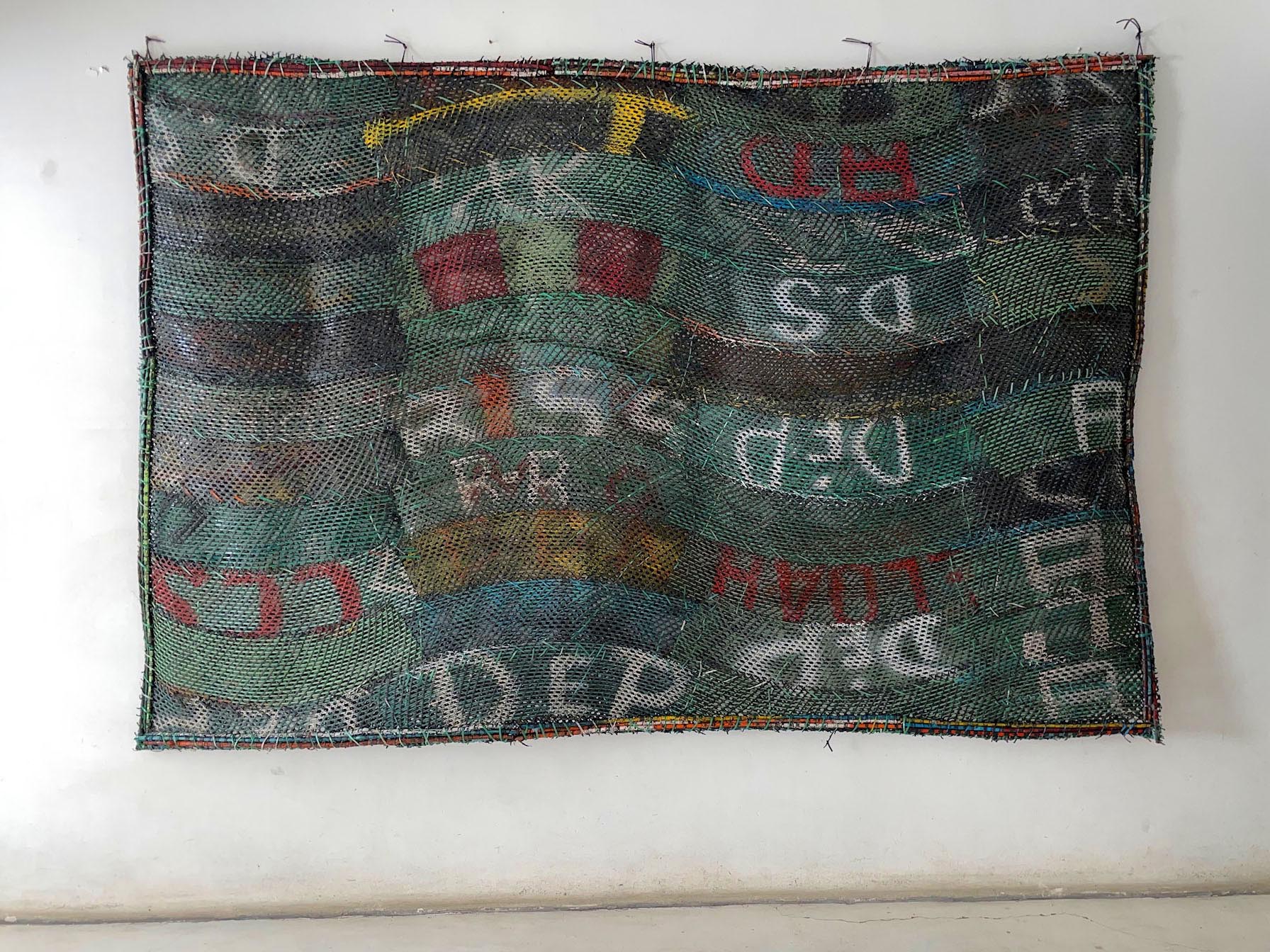
VagasLuzes, recycled Acai baskets, glue, 320x200x30cm
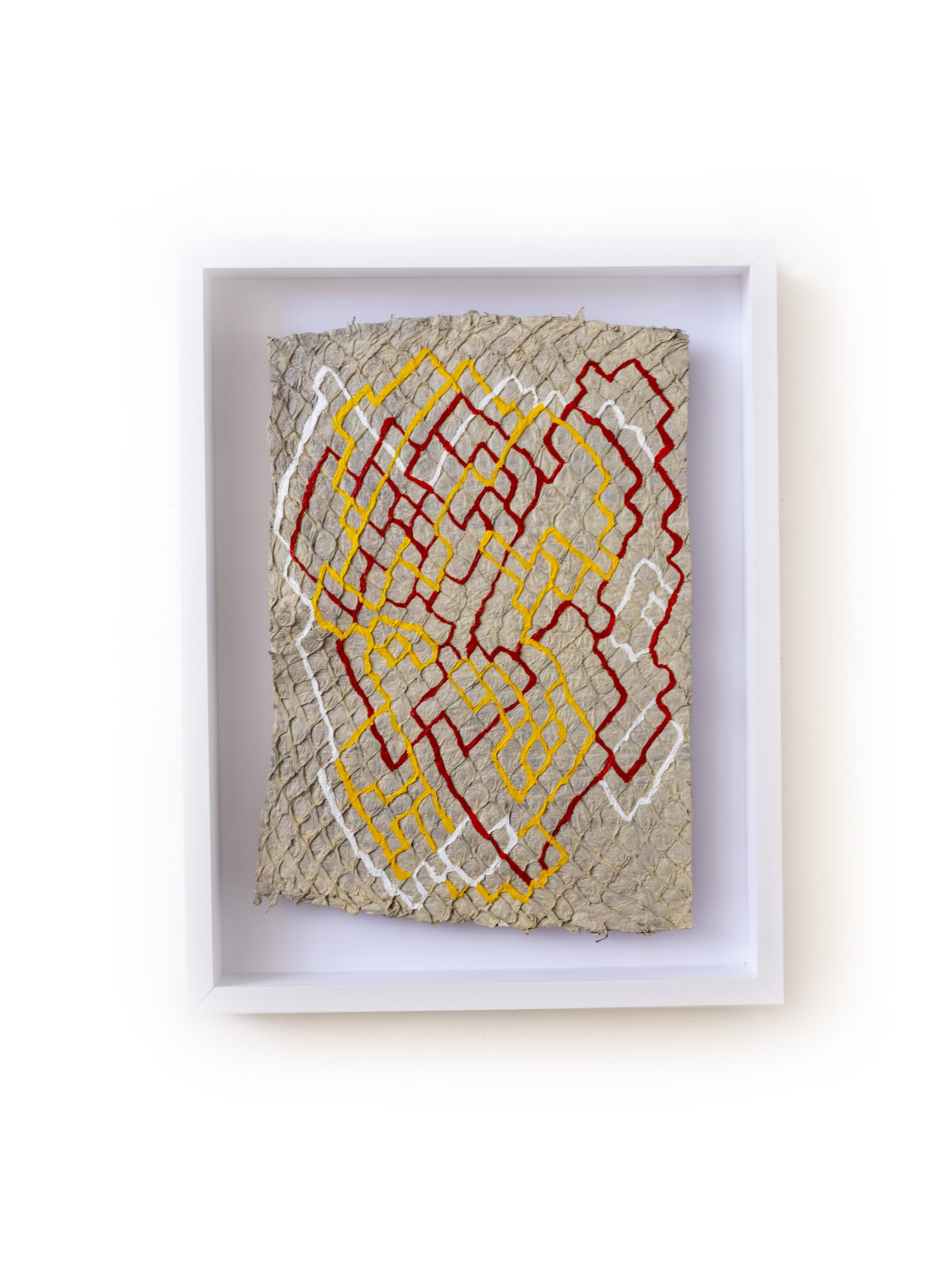
VagasLuzes, Pirarucu fish leather, acrylic paint, 49x63cm framed
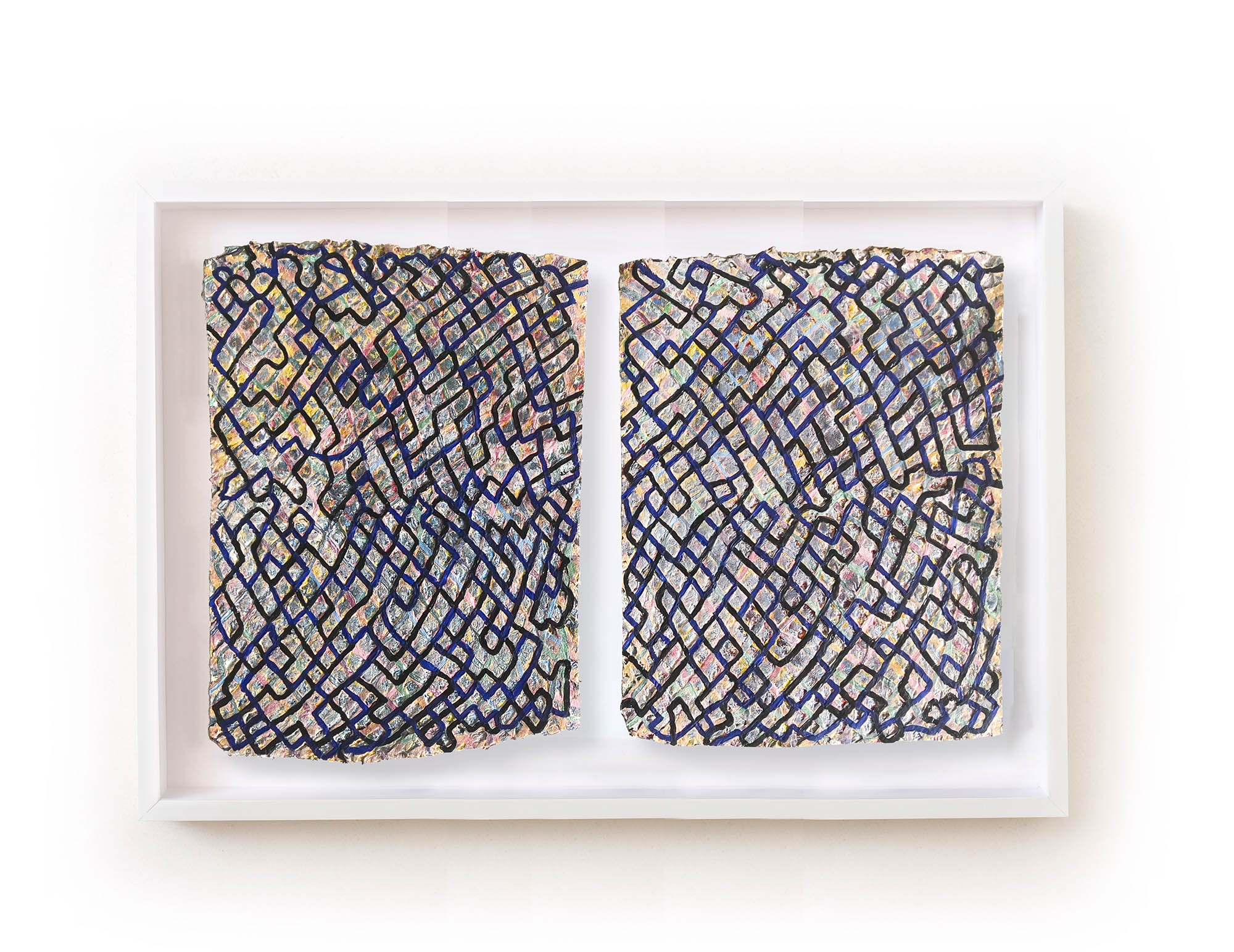
VagasLuzes, Pirarucu fish leather, acrylic paint, 110x70cm framed
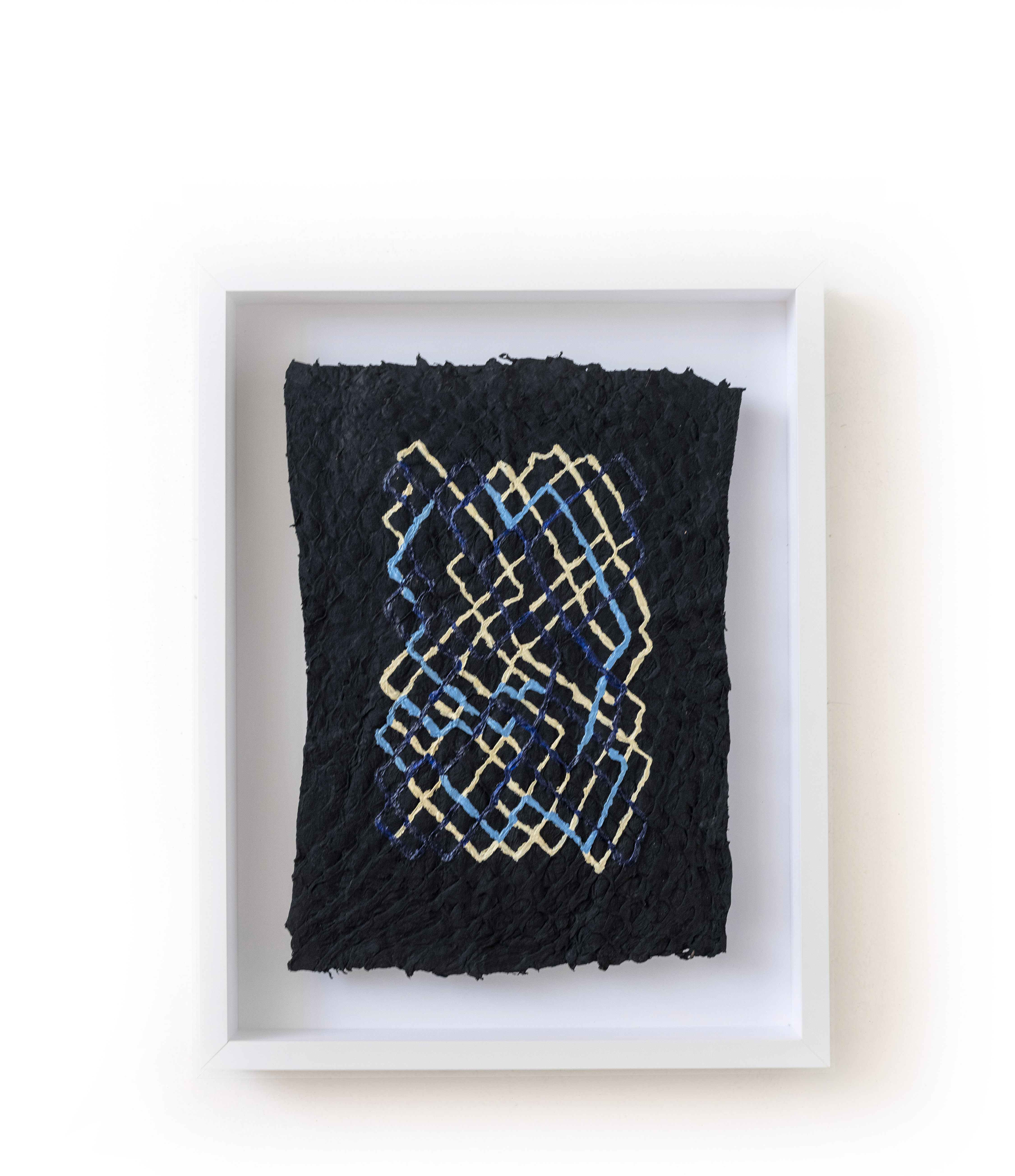
VagasLuzes, Pirarucu fish leather, acrylic paint, 49x63cm framed
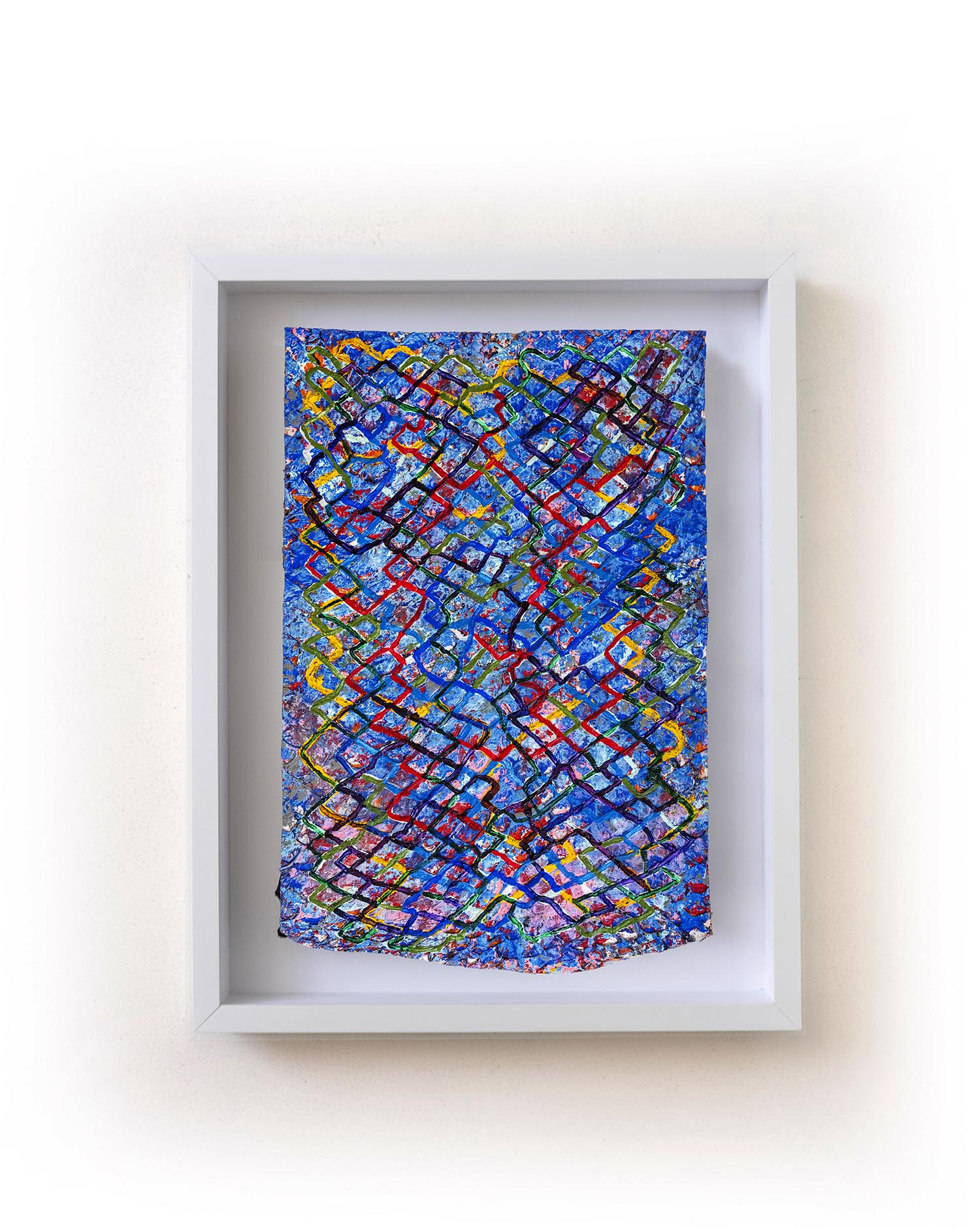
VagasLuzes, Pirarucu fish leather, acrylic paint, 49x63cm framed
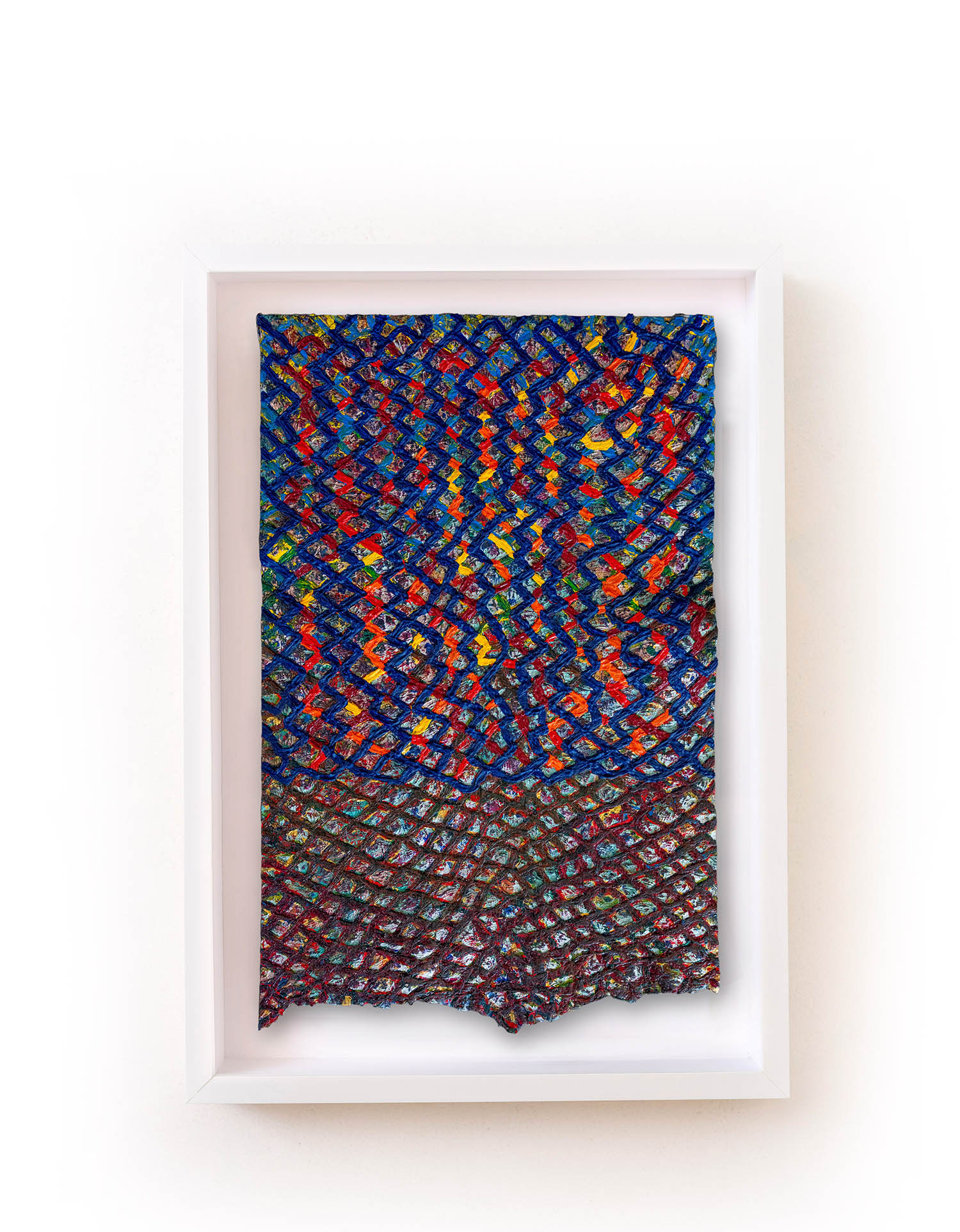
VagasLuzes, Pirarucu fish leather, acrylic paint, 45x65cm framed

VagasLuzes, acrylic paint, spray paint on canvas, 120x150cm
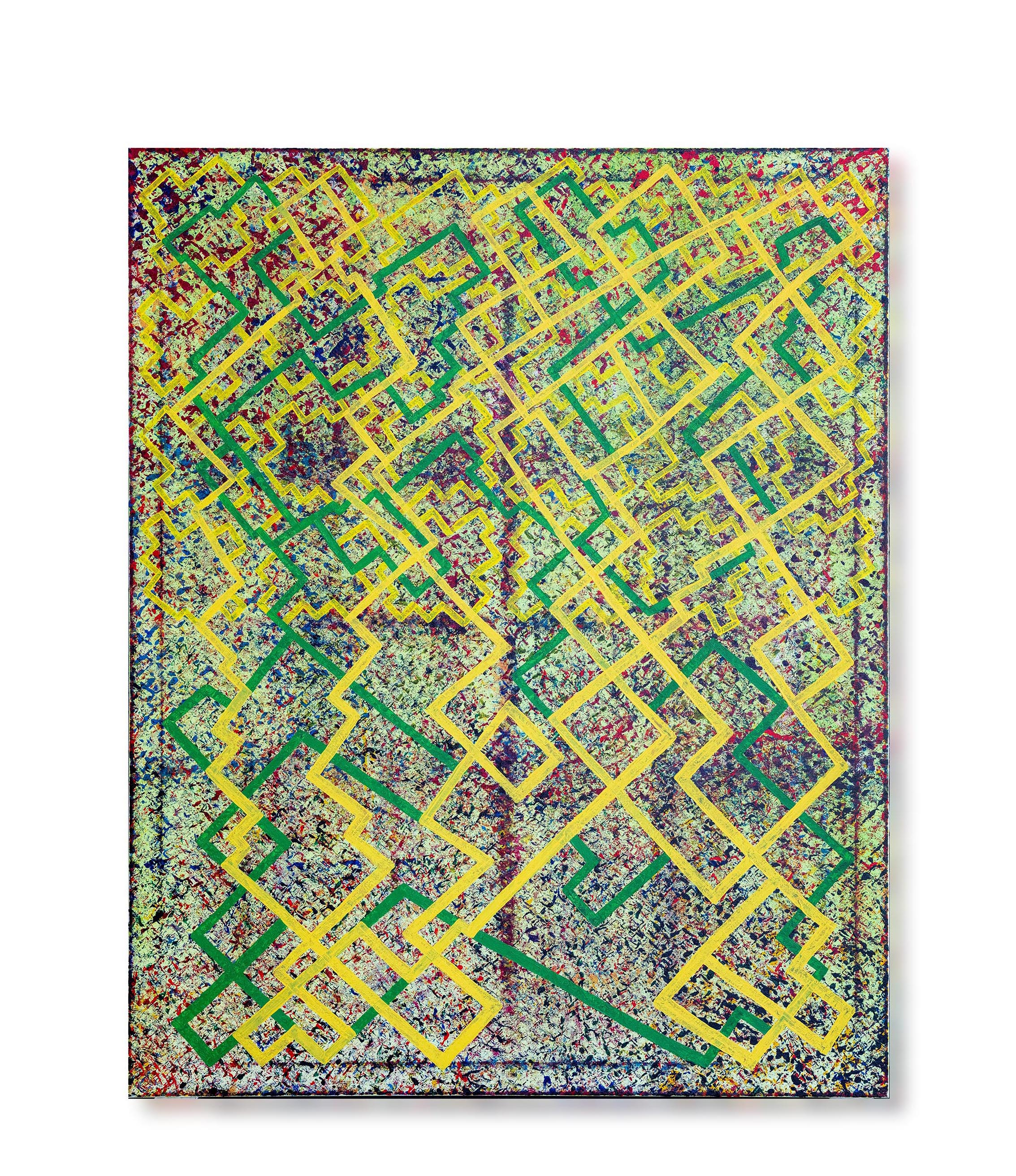
VagasLuzes, acrylic paint, spray paint on canvas, 120x150cm
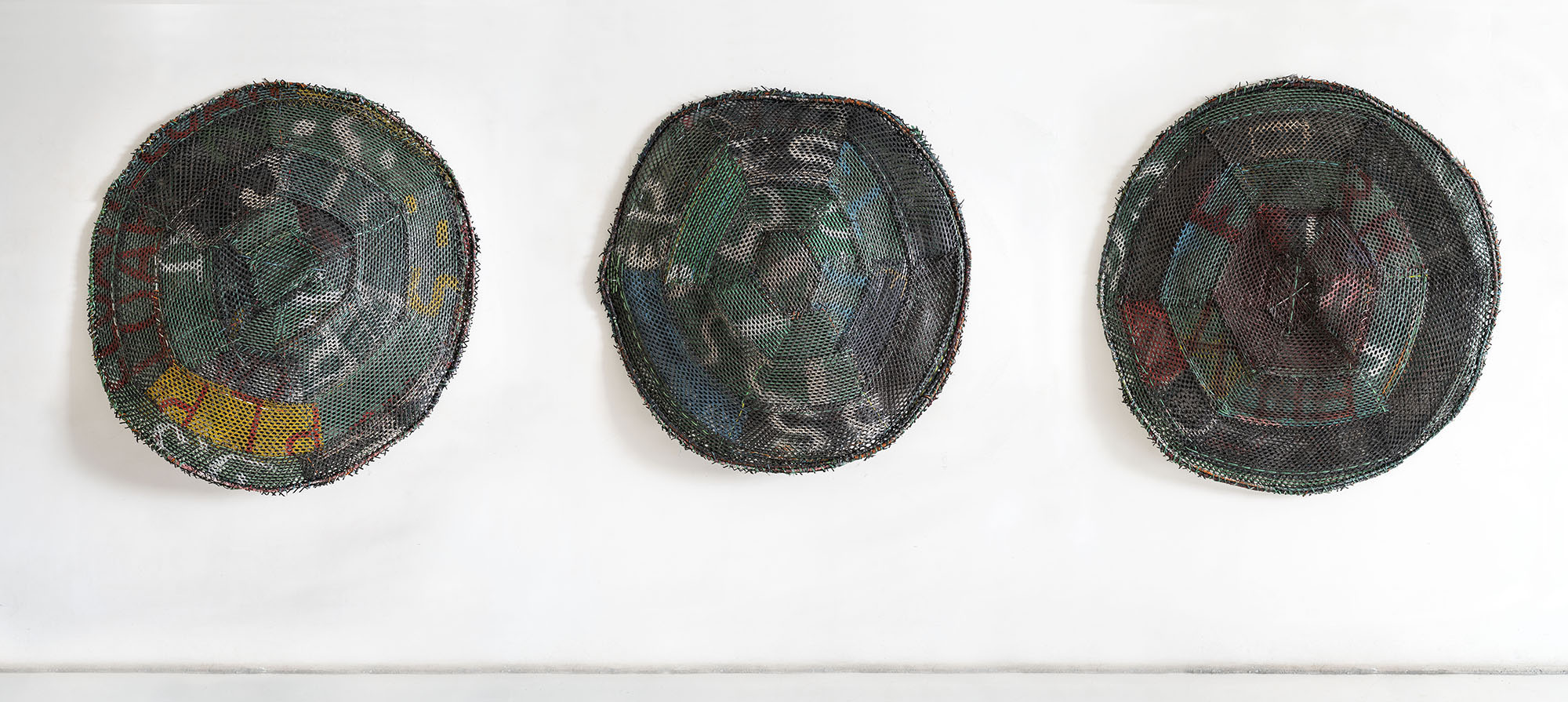
VagasLuzes, recycled Acai baskets, glue, strass crystals, 150cm diameter each, 15 cm deep
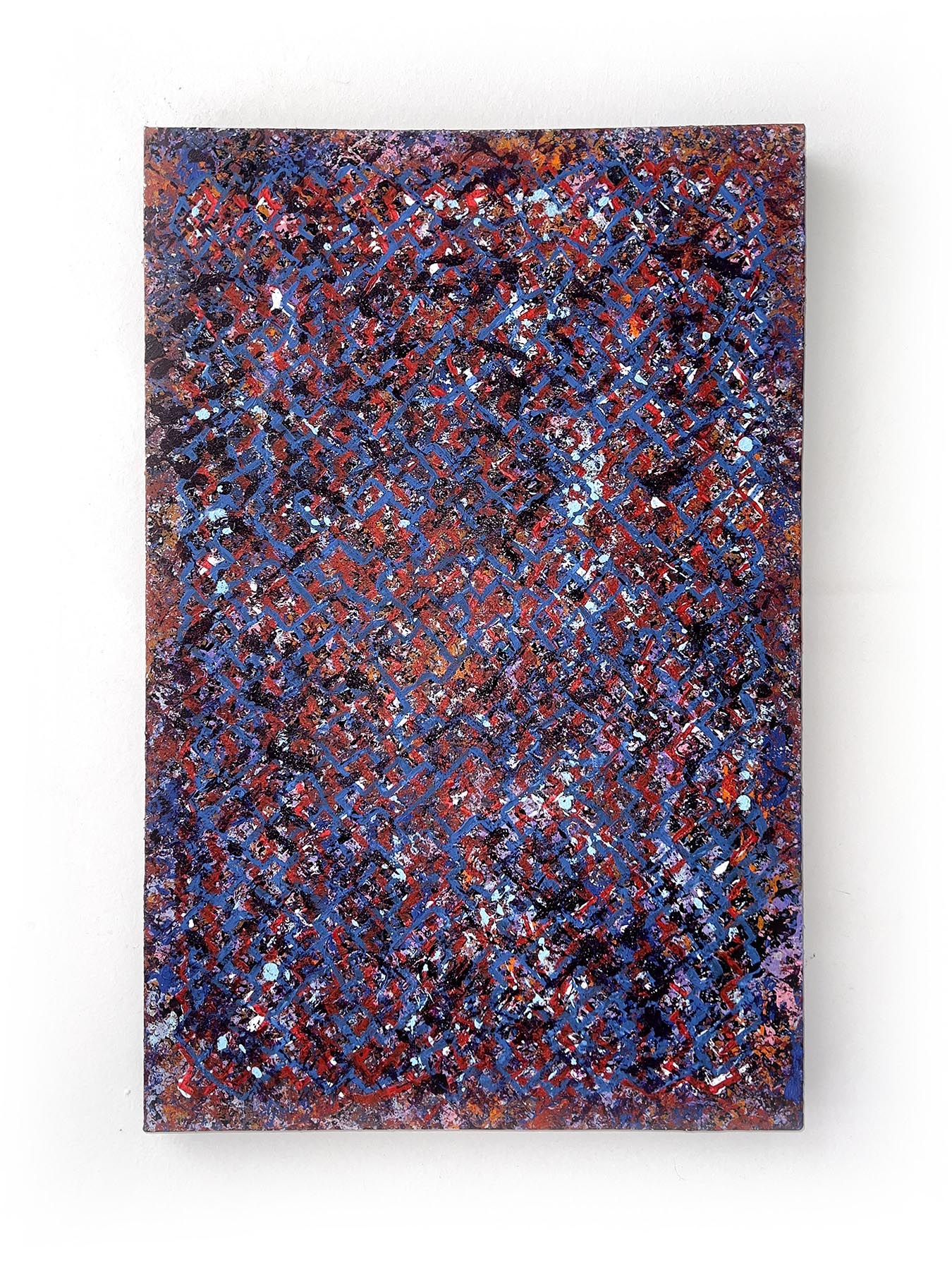
VagasLuzes, acrylic paint on canvas, 40x60cm
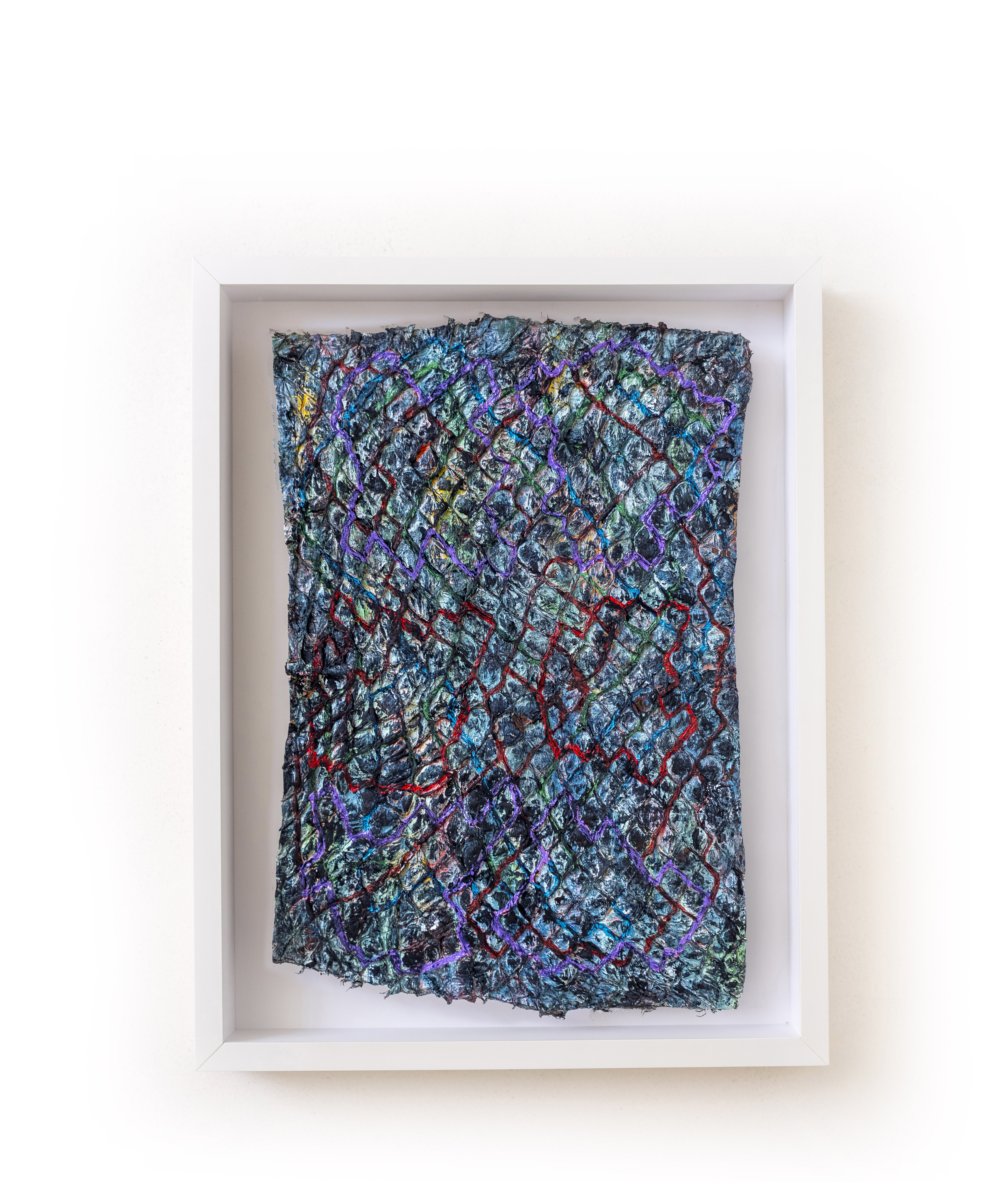
VagasLuzes, Pirarucu fish leather, acrylic paint, 49x63cm framed
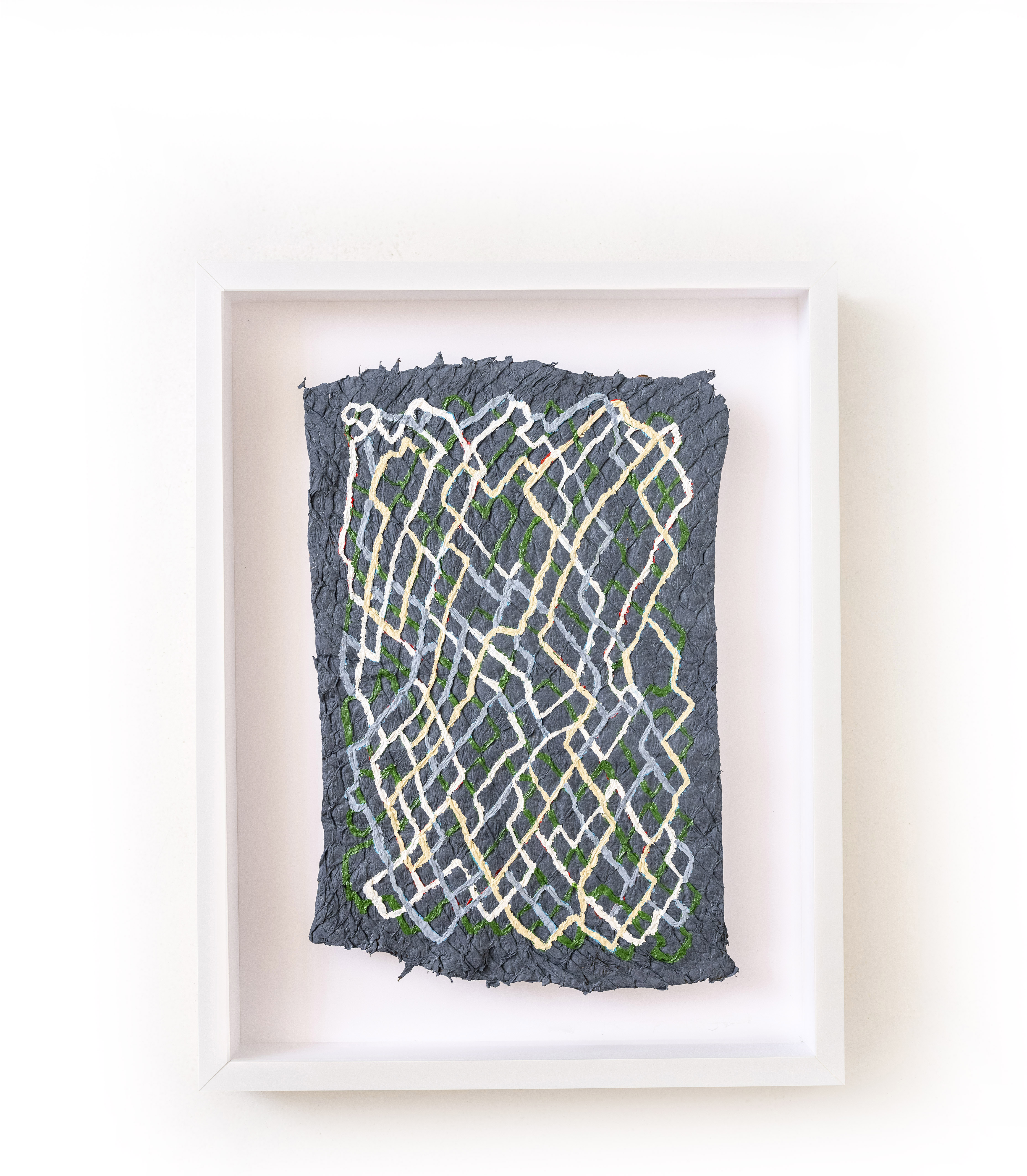
VagasLuzes, Pirarucu fish leather, acrylic paint, 49x63cm framed
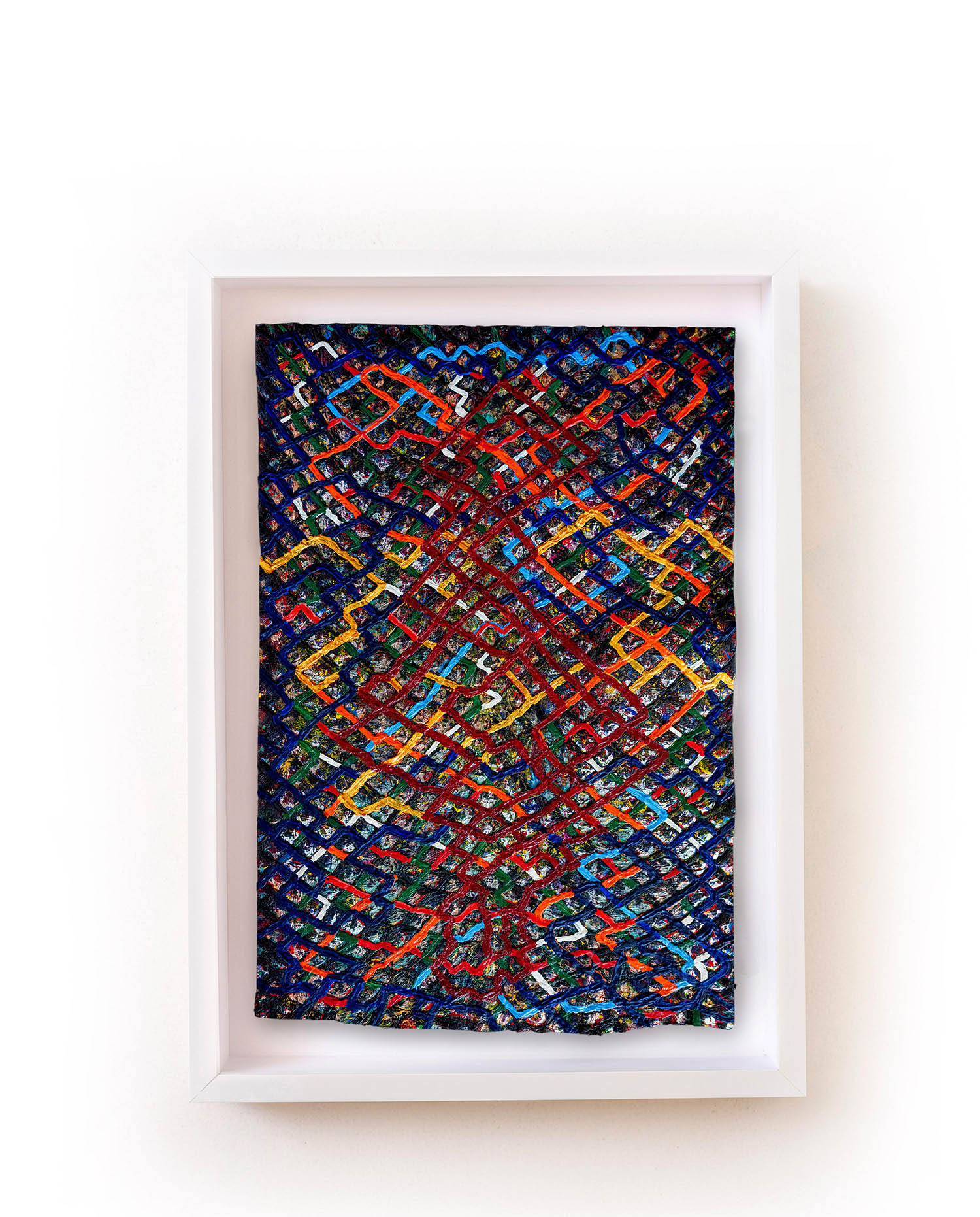
VagasLuzes, Pirarucu fish leather, acrylic paint, 55x70cm framed
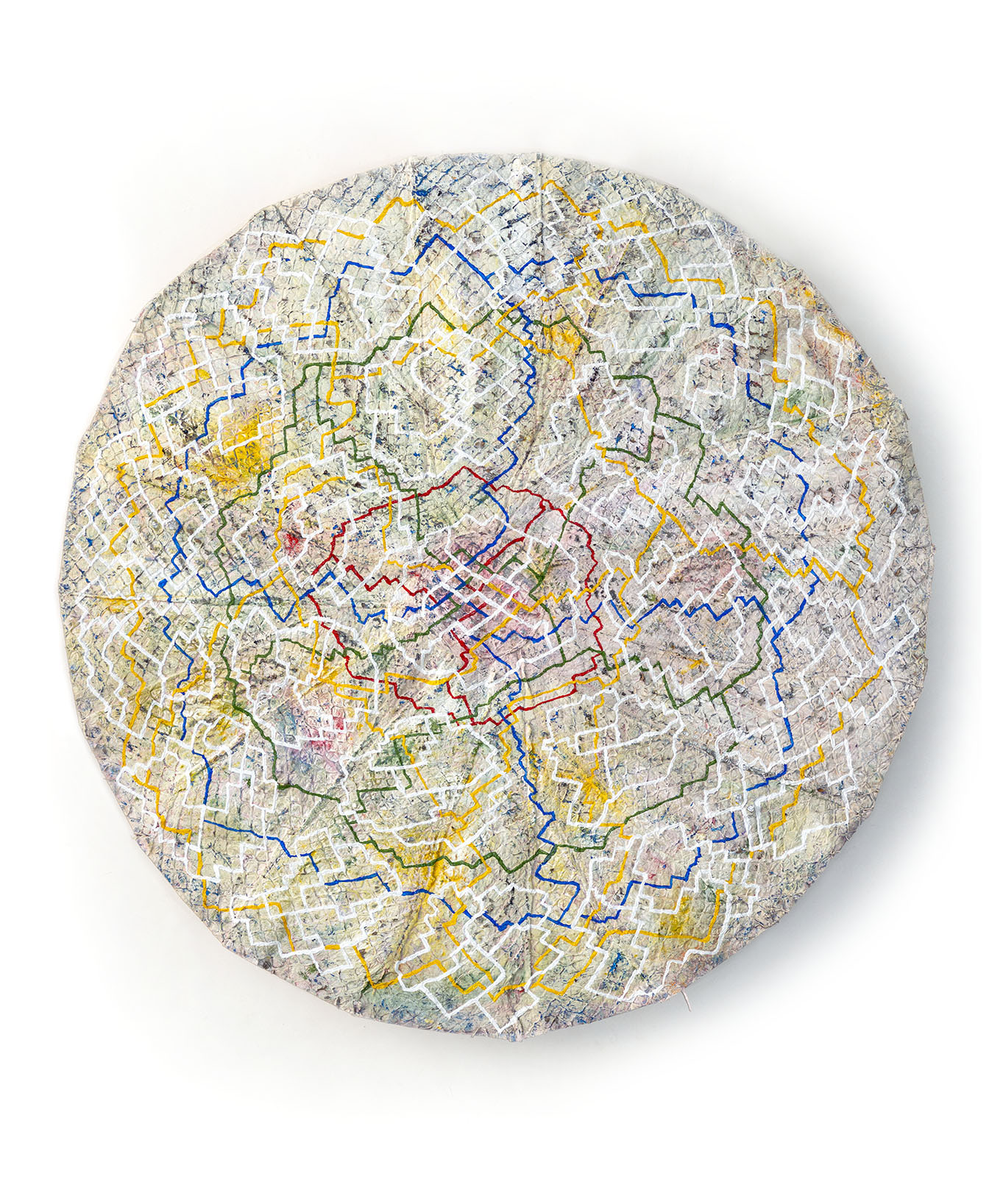
VagasLuzes, Pirarucu fish leather, acrylic paint, wood, 120cm diameter, 15cm deep
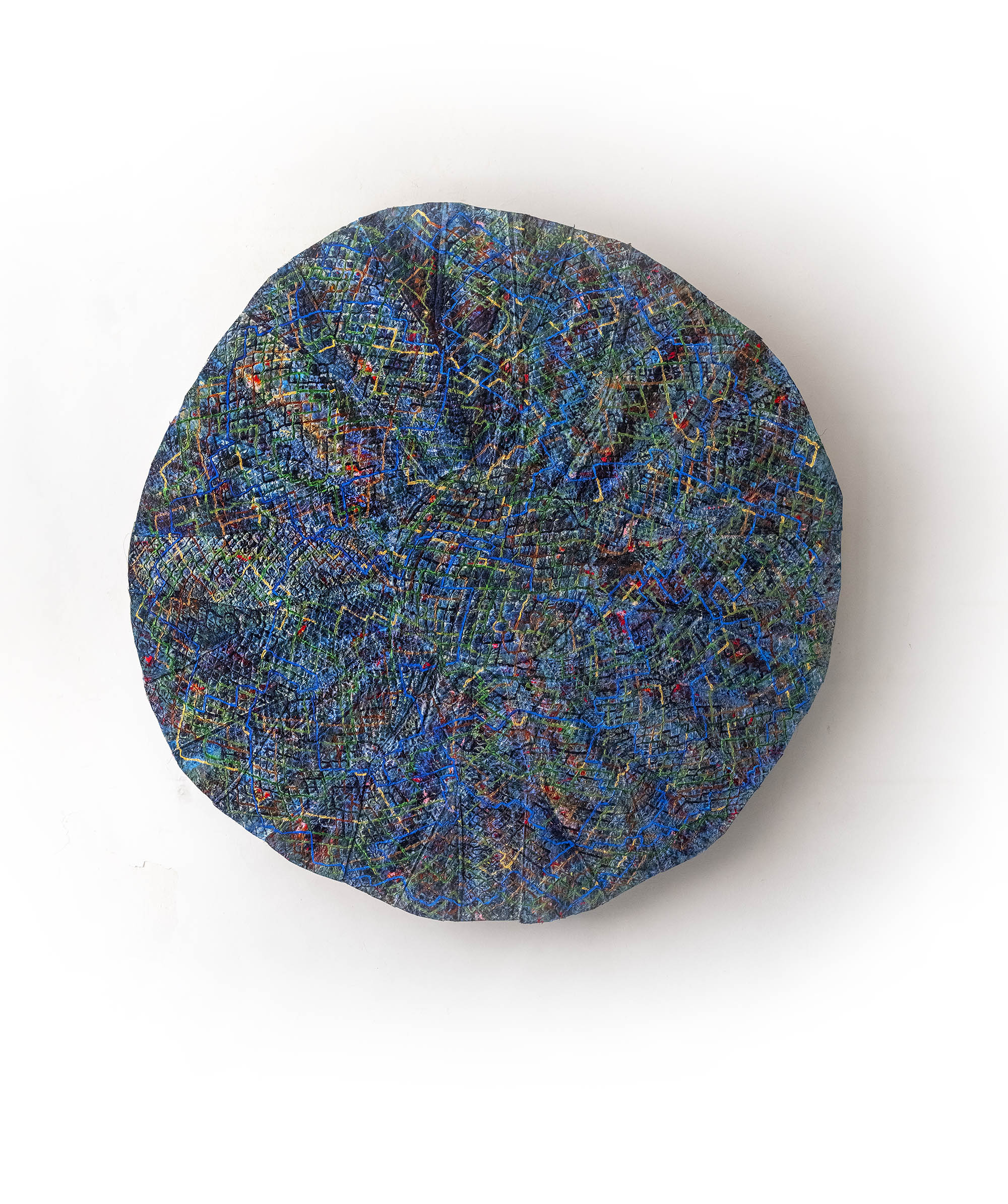

VagasLuzes, Pirarucu fish leather, acrylic paint, wood, 130cm diameter, 15cm deep
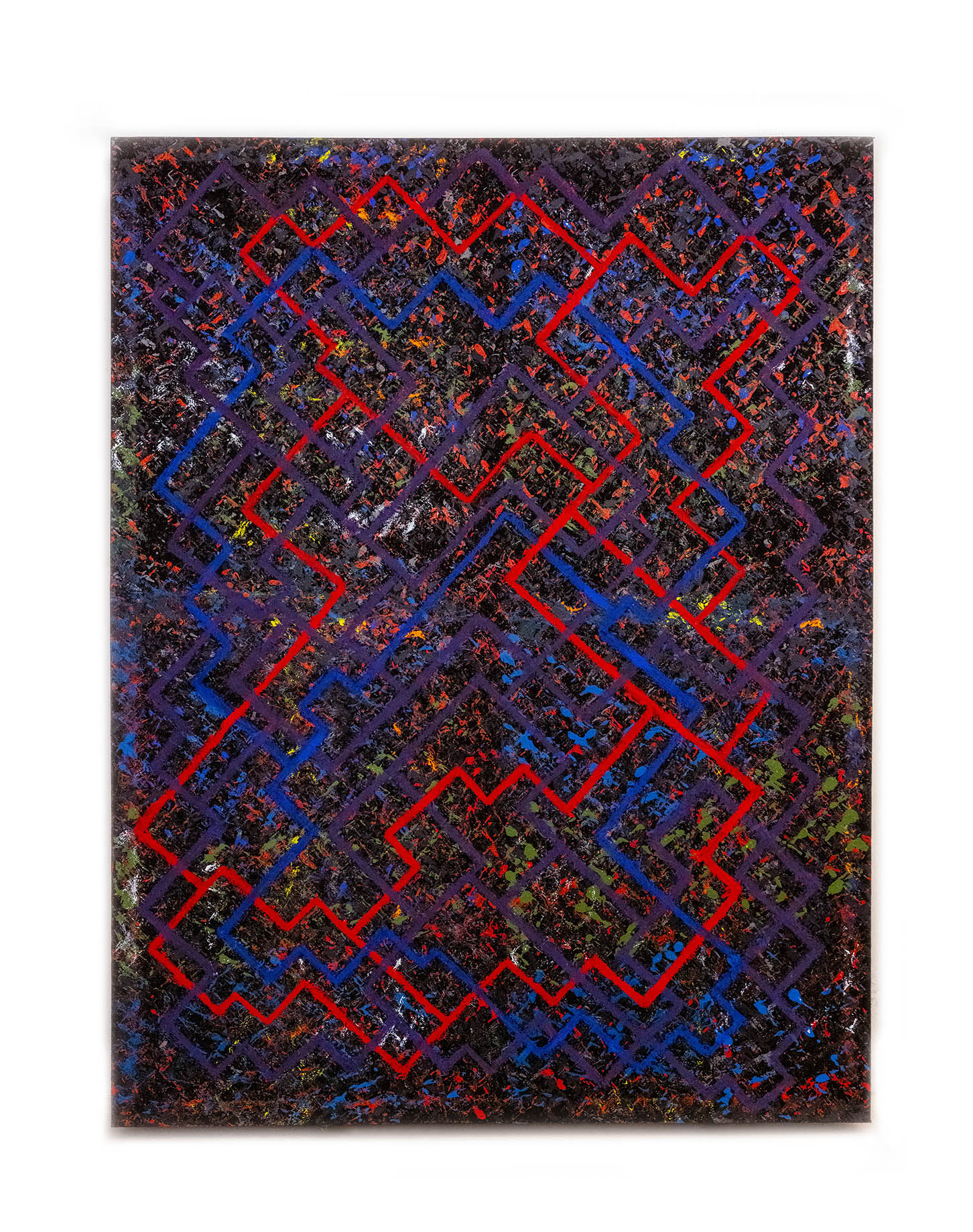
VagasLuzes, acrylic paint and oil stick on canvas, 80x105cm
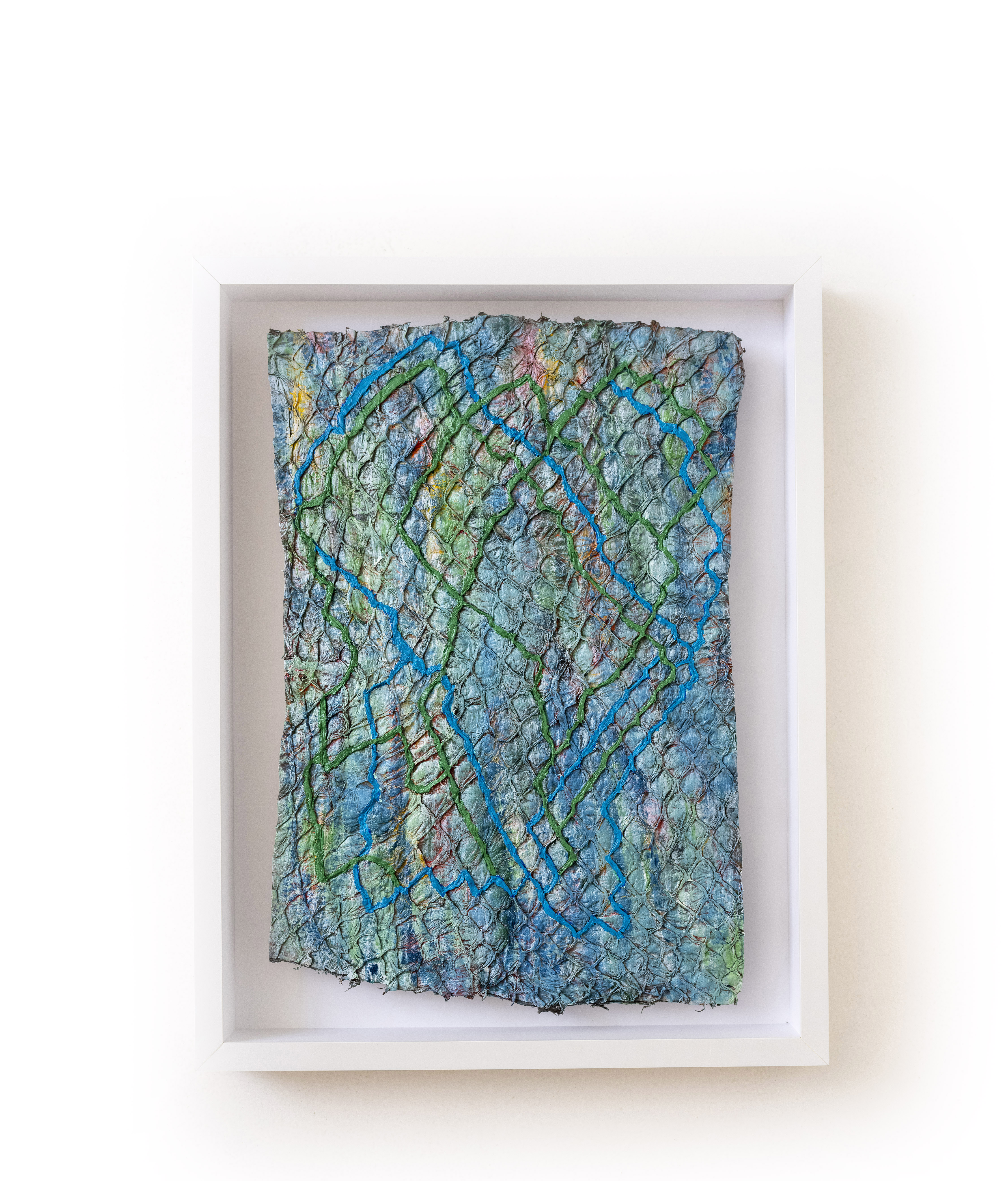
VagasLuzes, Pirarucu fish leather, acrylic paint, 49x63cm framed
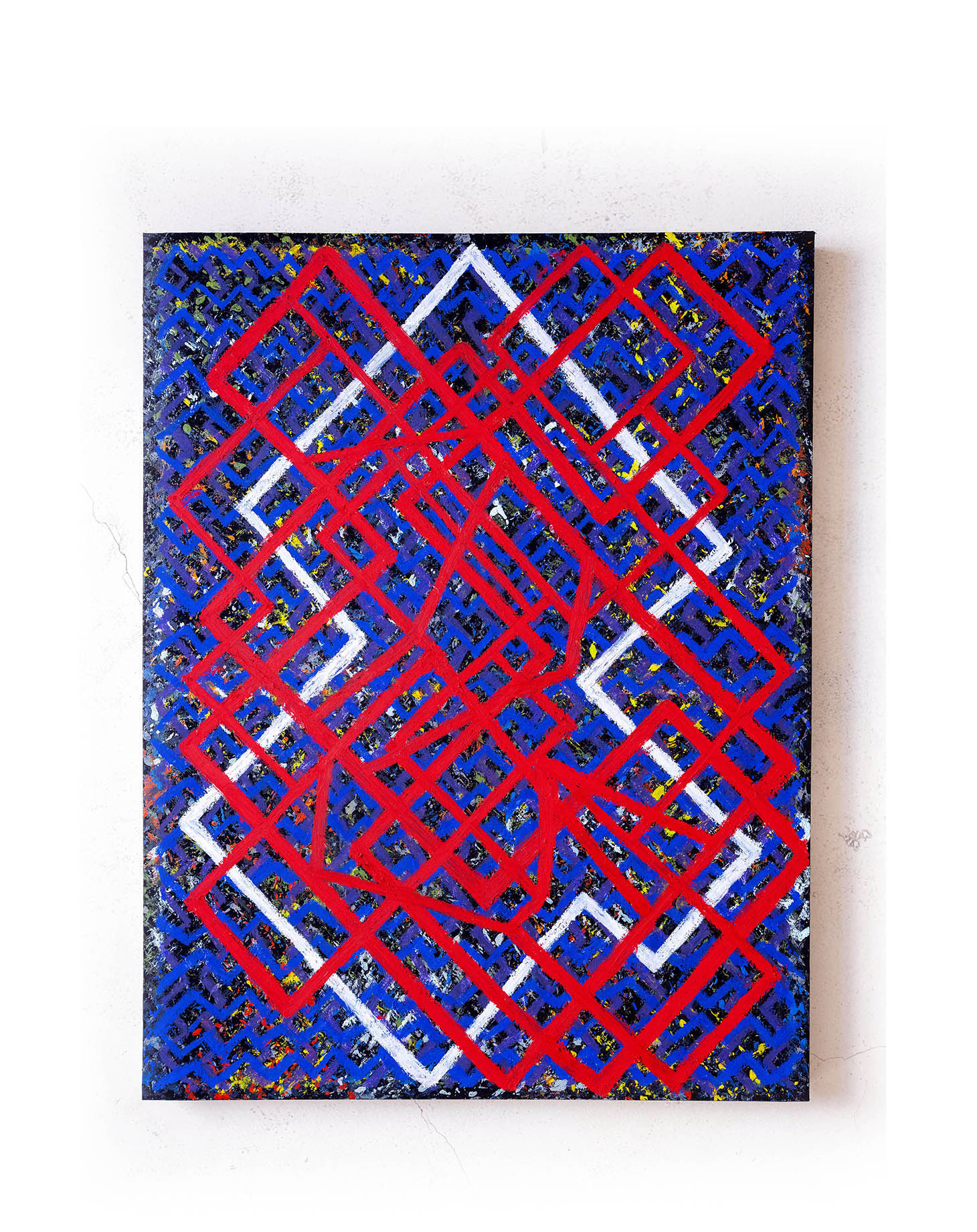
VagasLuzes, acrylic paint and oil stick on canvas, 80x105cm
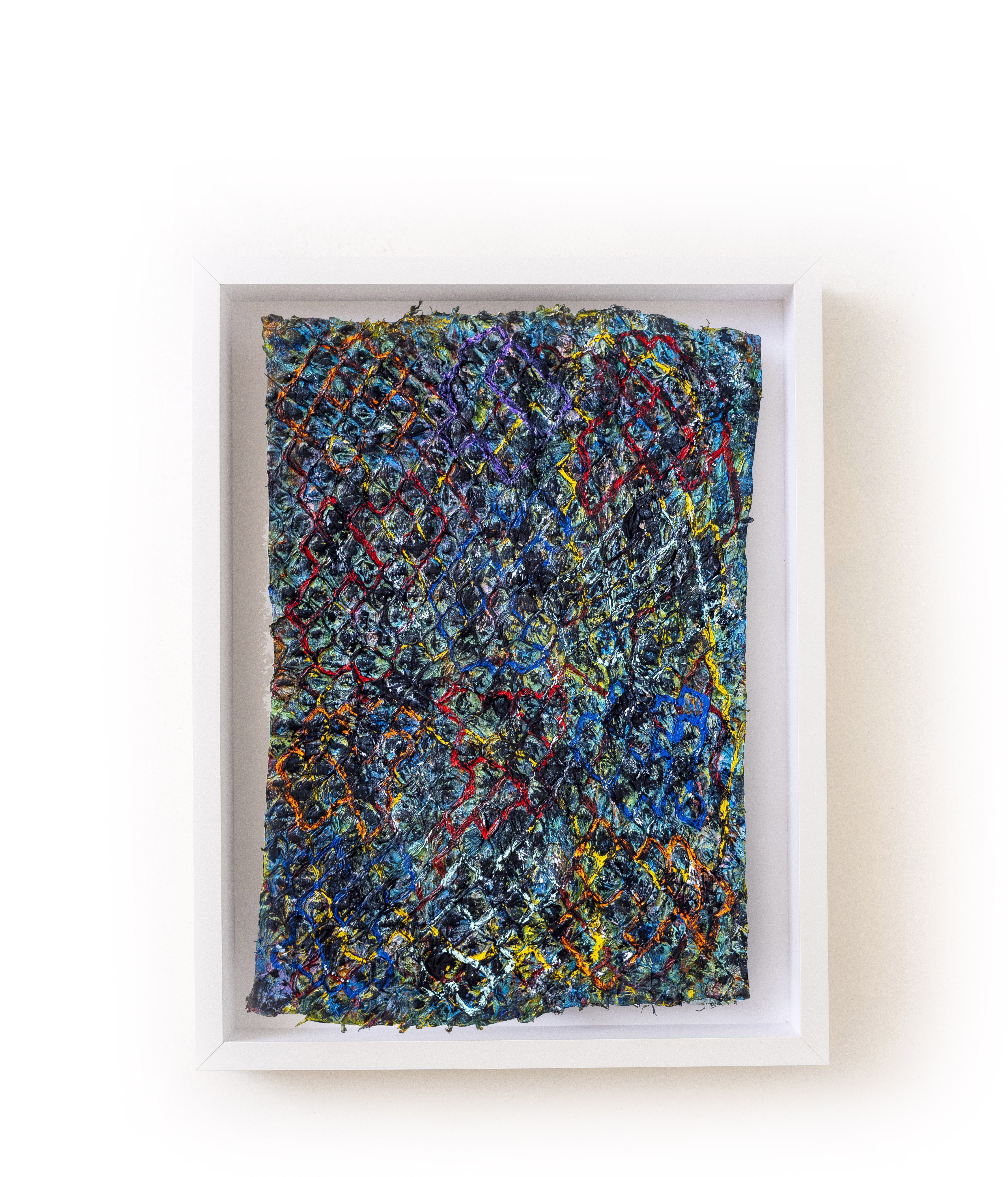
VagasLuzes, Pirarucu fish leather, acrylic paint, 49x63cm framed
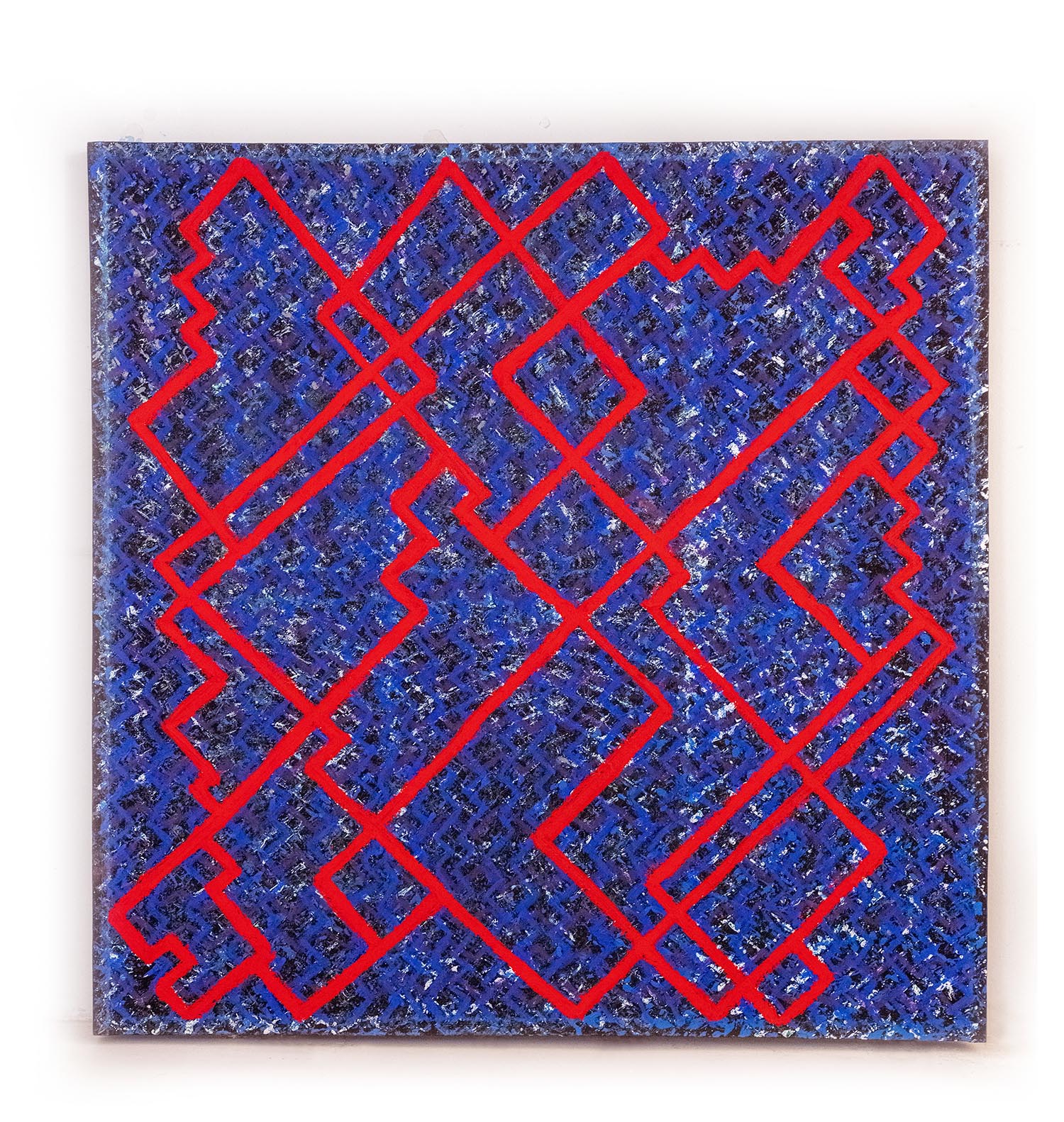
VagasLuzes, acrylic paint and oil stick on canvas, 111x111cm
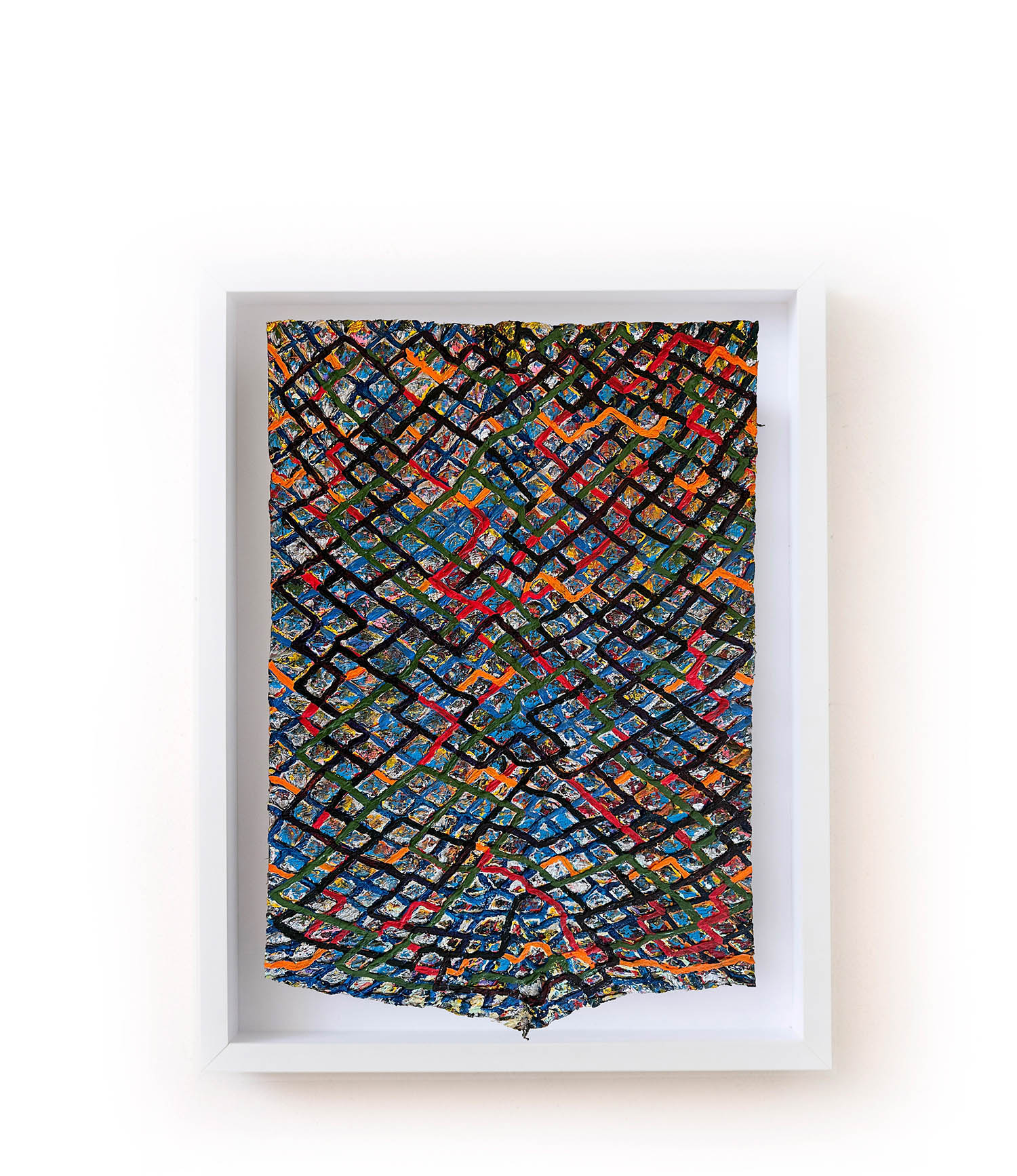
VagasLuzes, Pirarucu fish leather, acrylic paint, 49x63cm framed
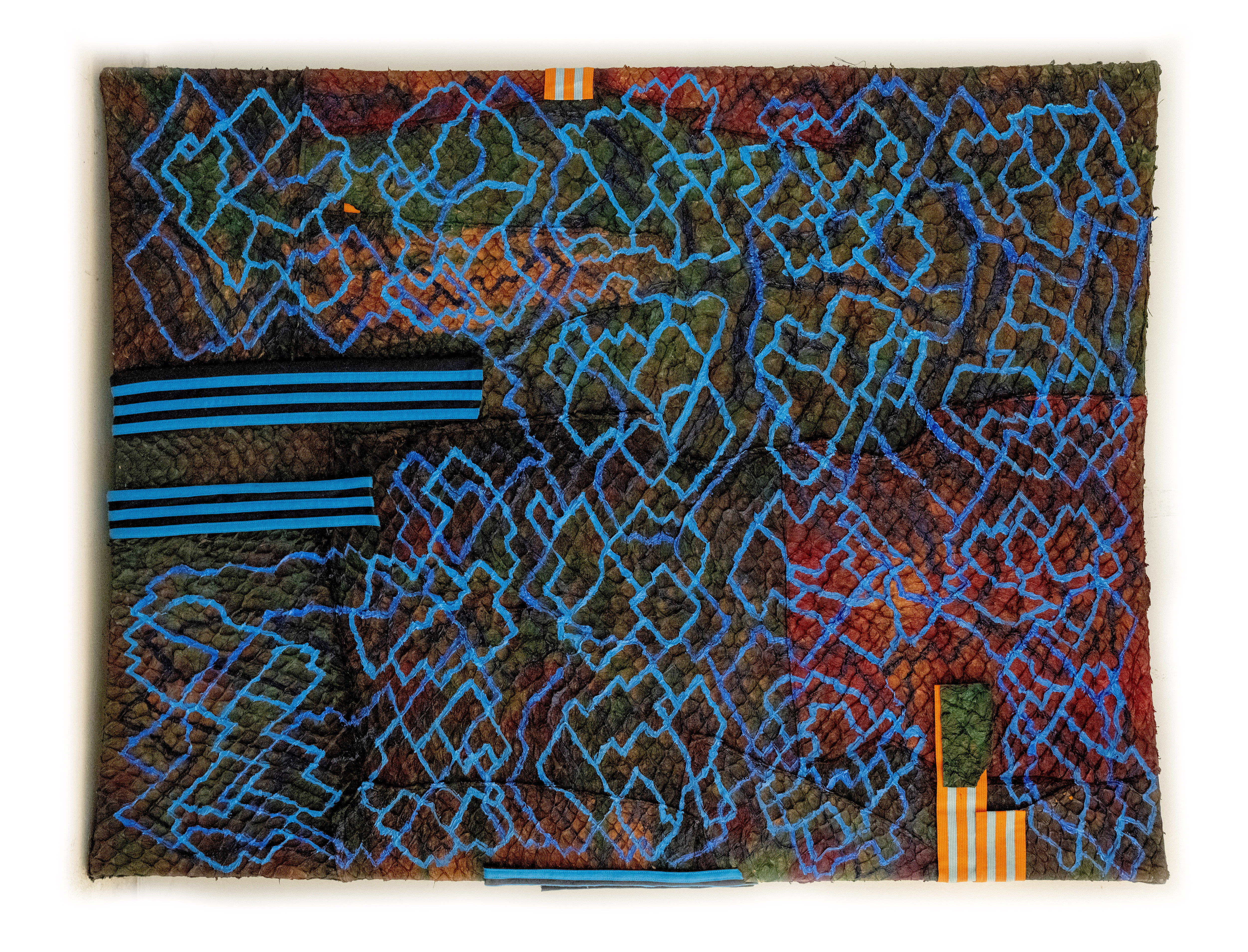
VagasLuzes, Pirarucu fish leather, fabric, acrylic paint, 105x80cm

VagasLuzes, acrylic paint on canvas, 61.5x62cm

VagasLuzes, acrylic paint on canvas, 61.5x62cm
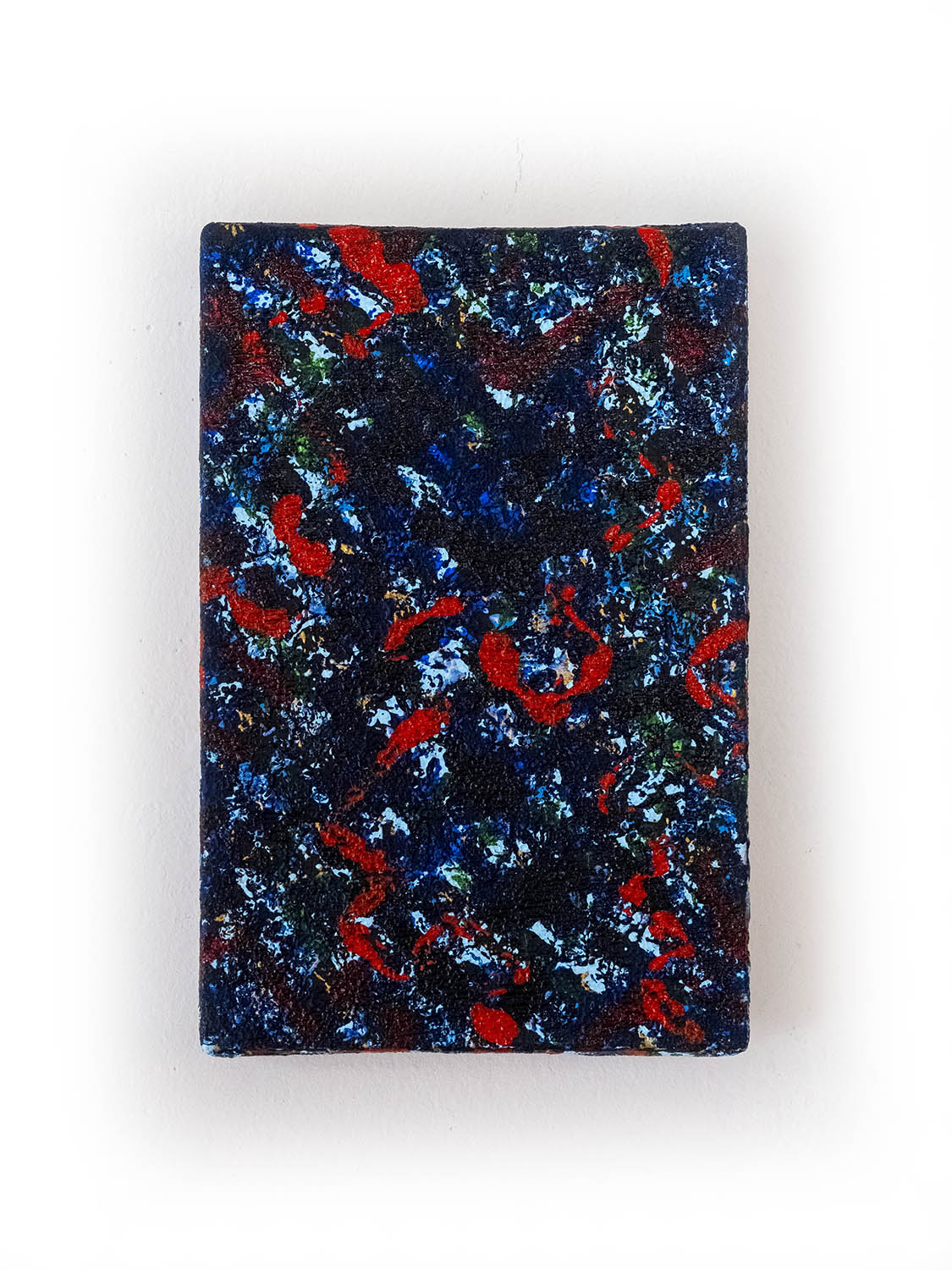
VagasLuzes, acrylic paint on canvas, 9.75x15cm
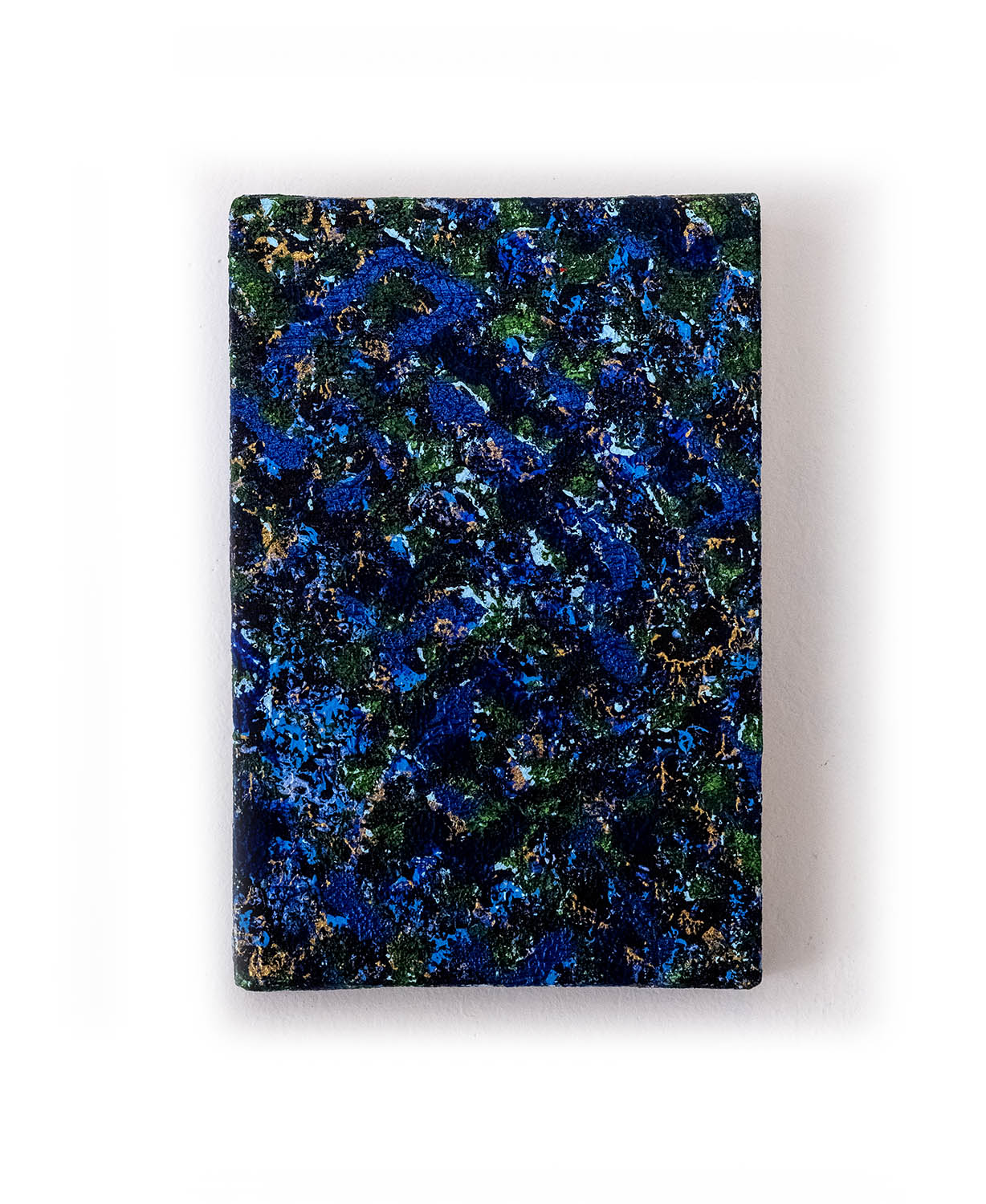
VagasLuzes, acrylic paint on canvas, 9.75x15cm

VagasLuzes, acrylic paint and oil stick on canvas, 4 parts total 120x60cm
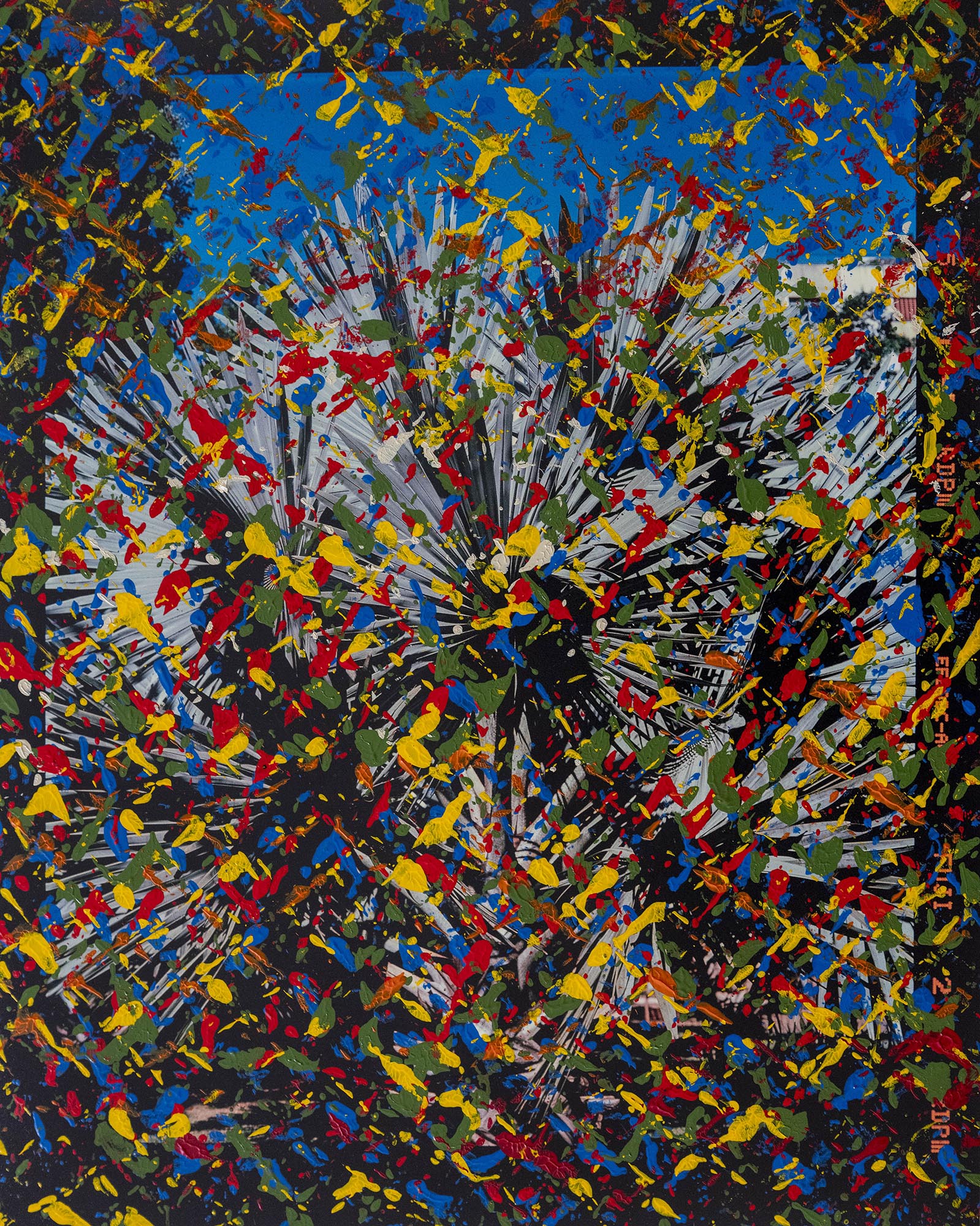
VagasLuzes, Chromogenic C-Print, acrylic paint, 36x46cm"
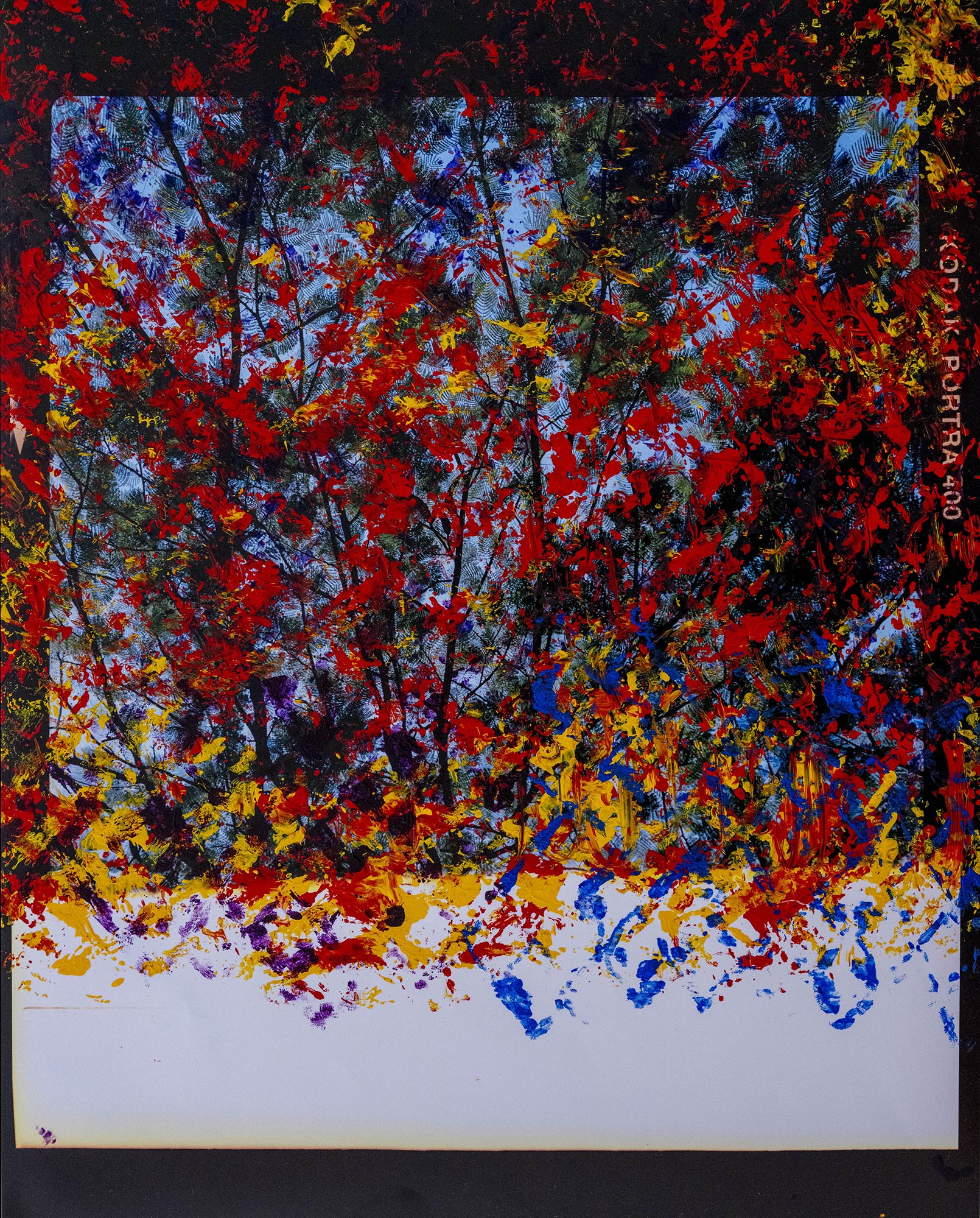
VagasLuzes, Chromogenic C-Print, acrylic paint, 36x46cm"

VagasLuzes, Pirarucu fish leather, acrylic paint, 49x63cm framed
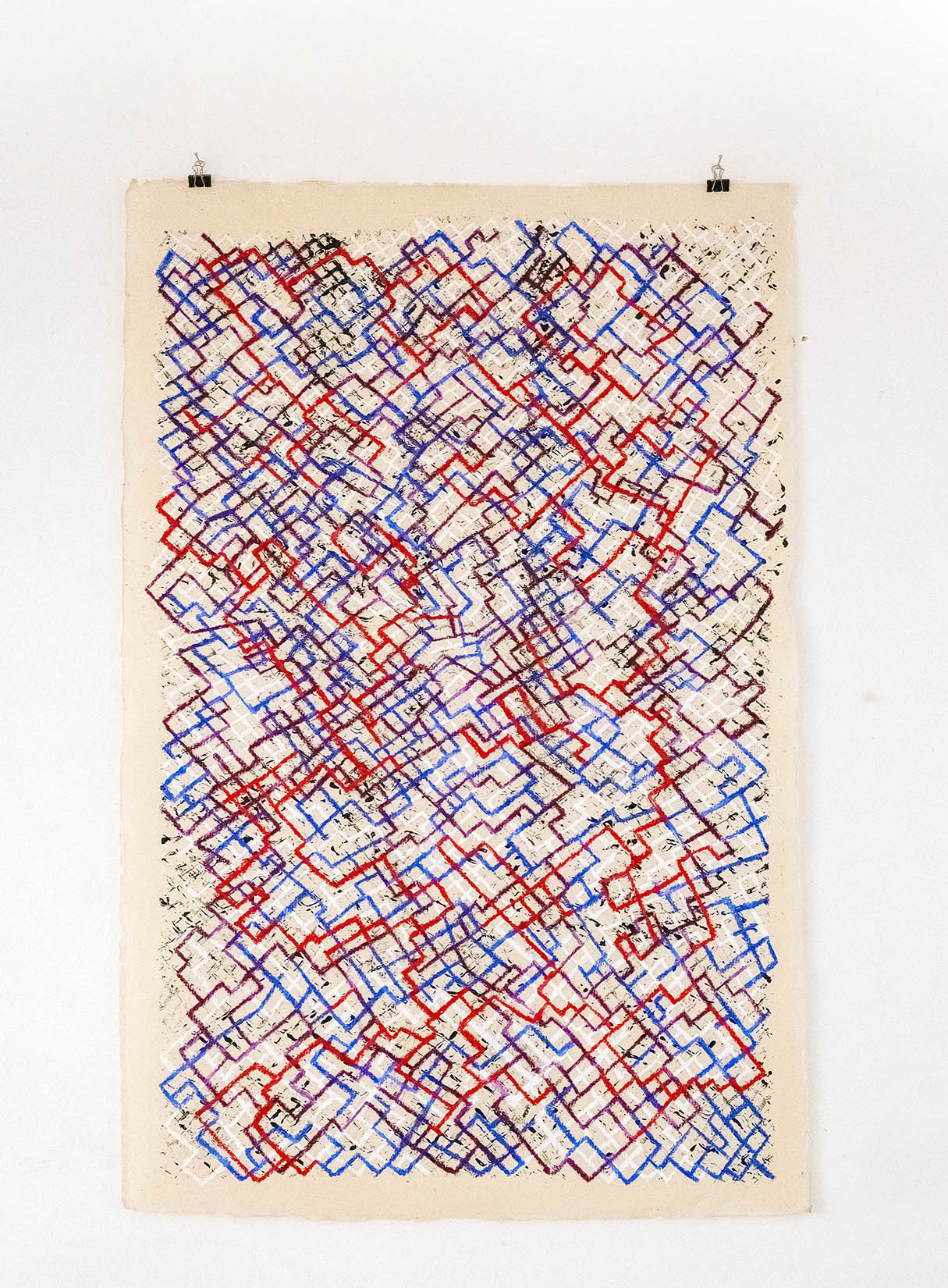
VagasLuzes, acrylic paint, Oil stick on handmade nepalese paper, 96x150cm
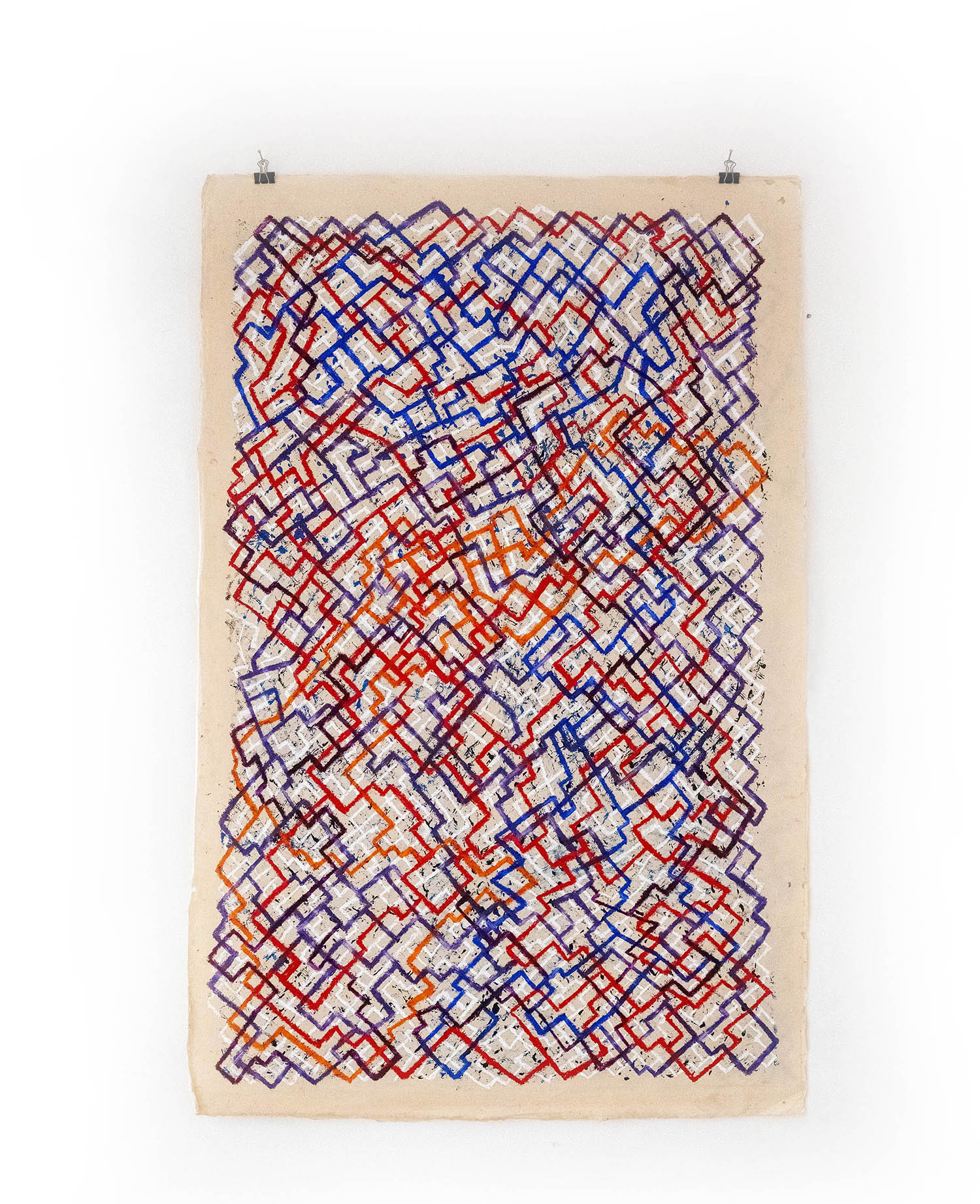
VagasLuzes, acrylic paint, Oil stick on handmade nepalese paper, 96x150cm
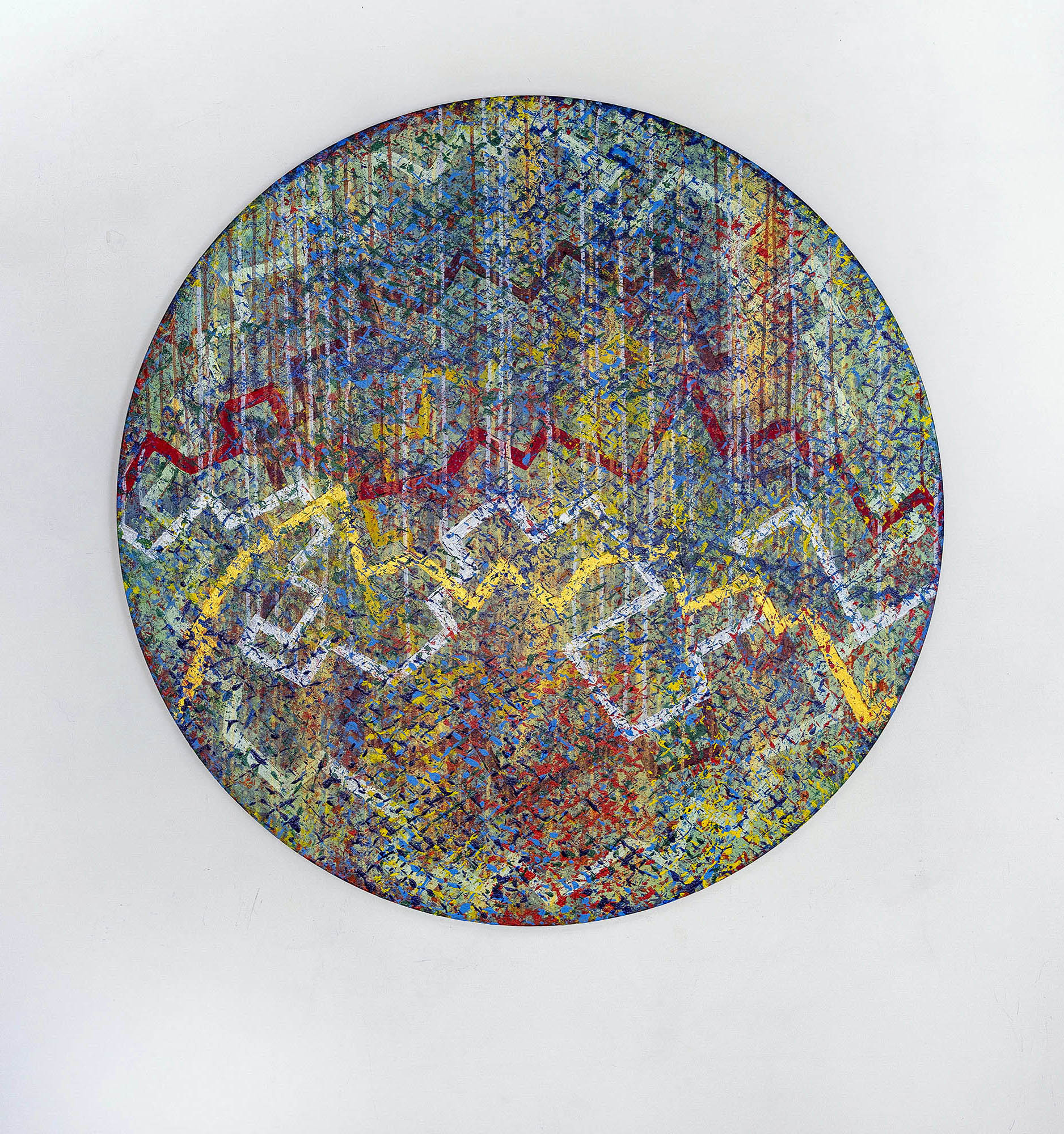
VagasLuzes, acrylic paint on canvas, 105cm diameter

VagasLuzes, acrylic paint on canvas, 9x12cm